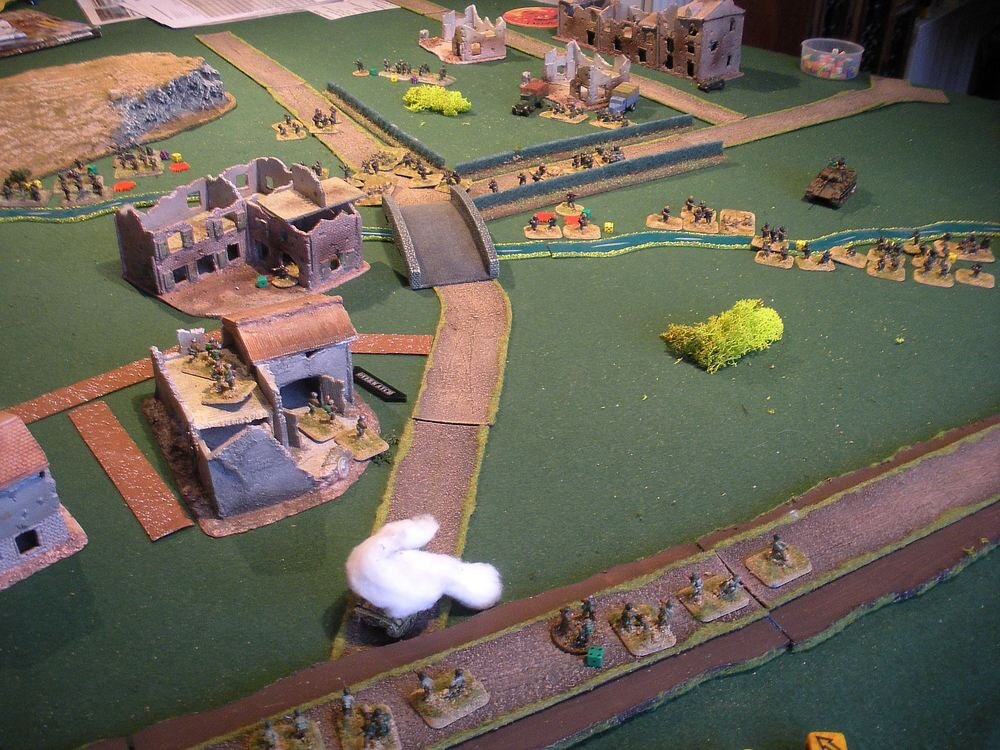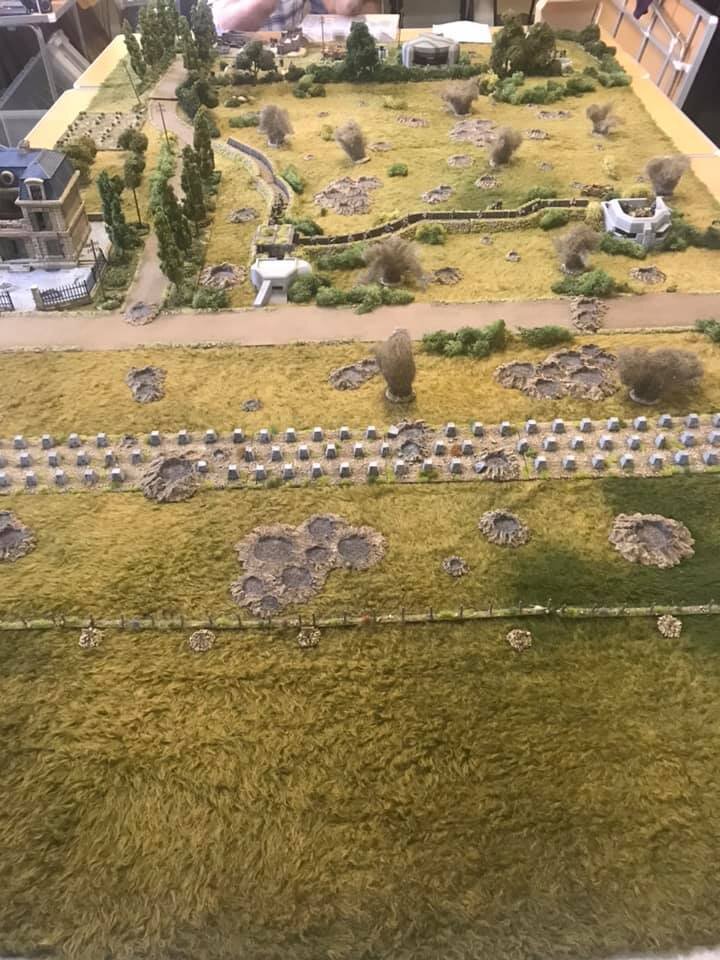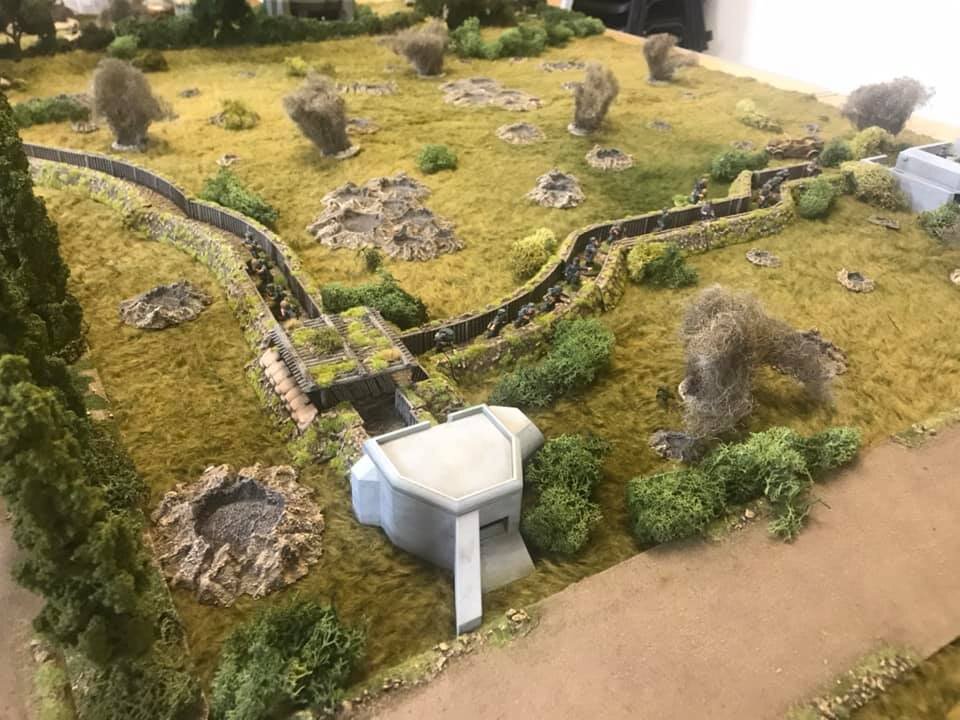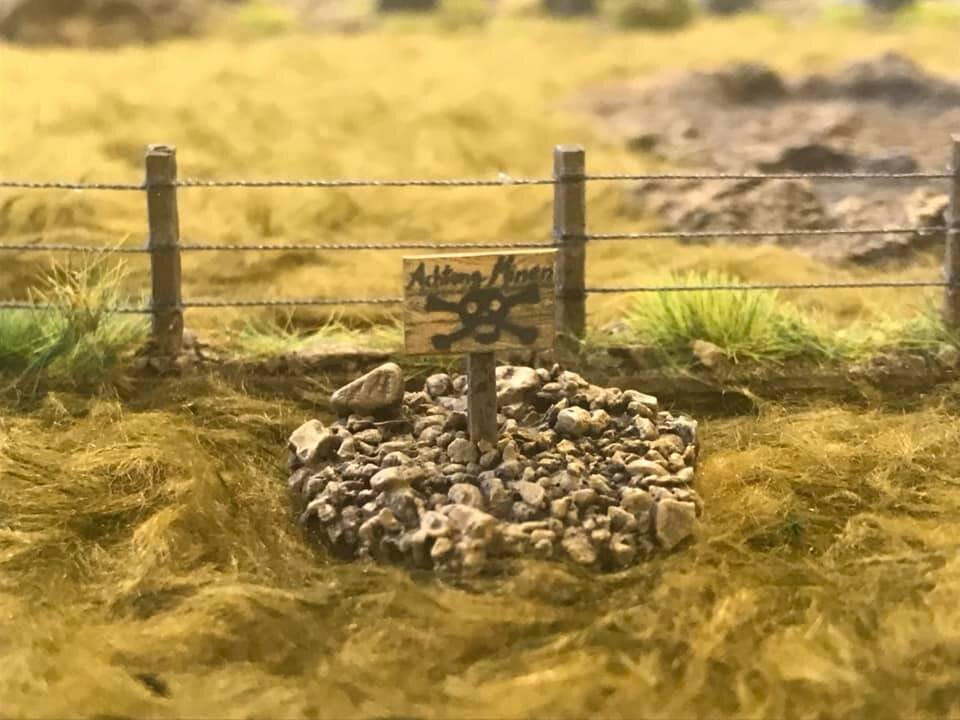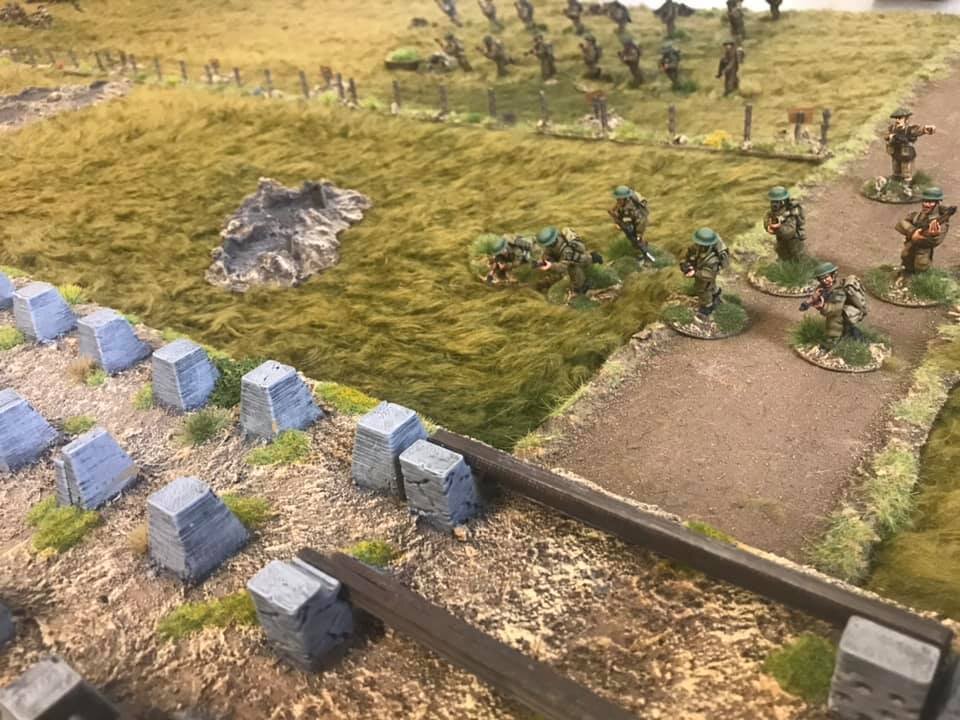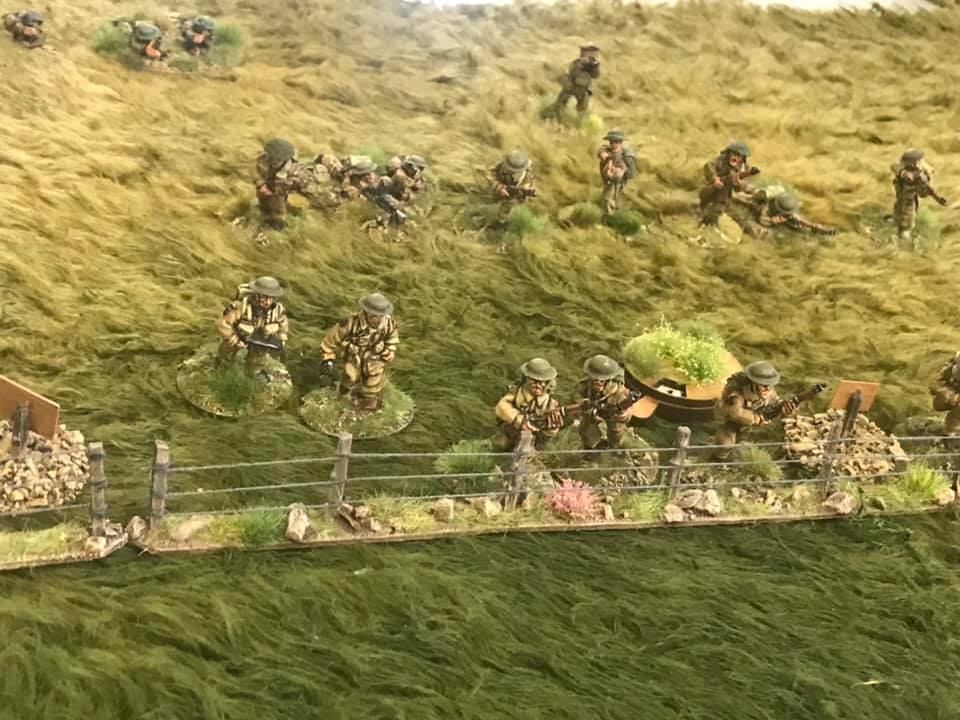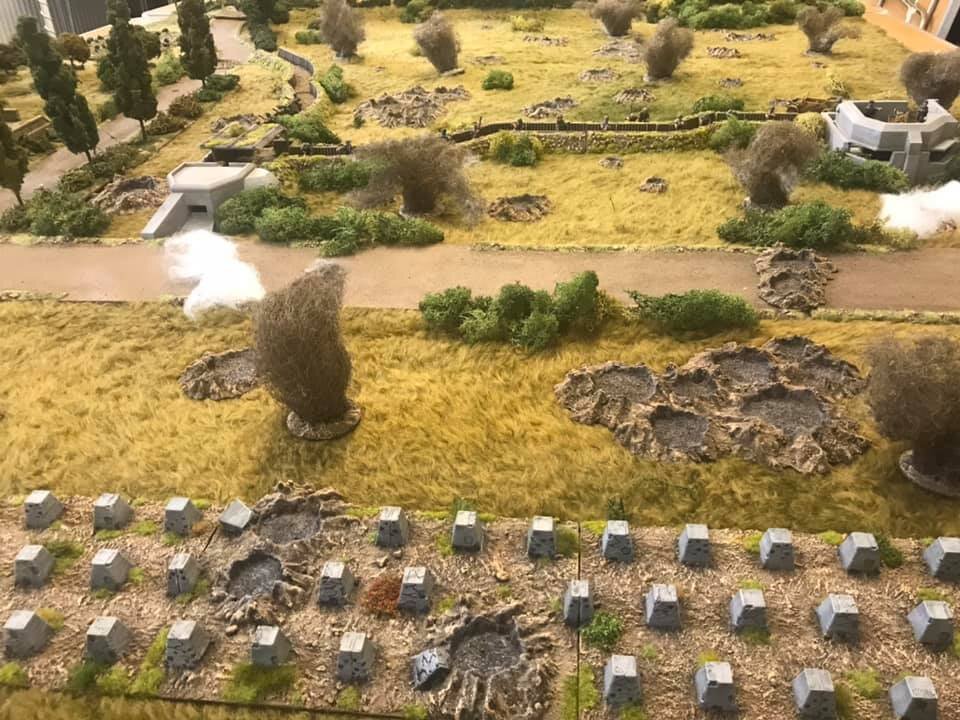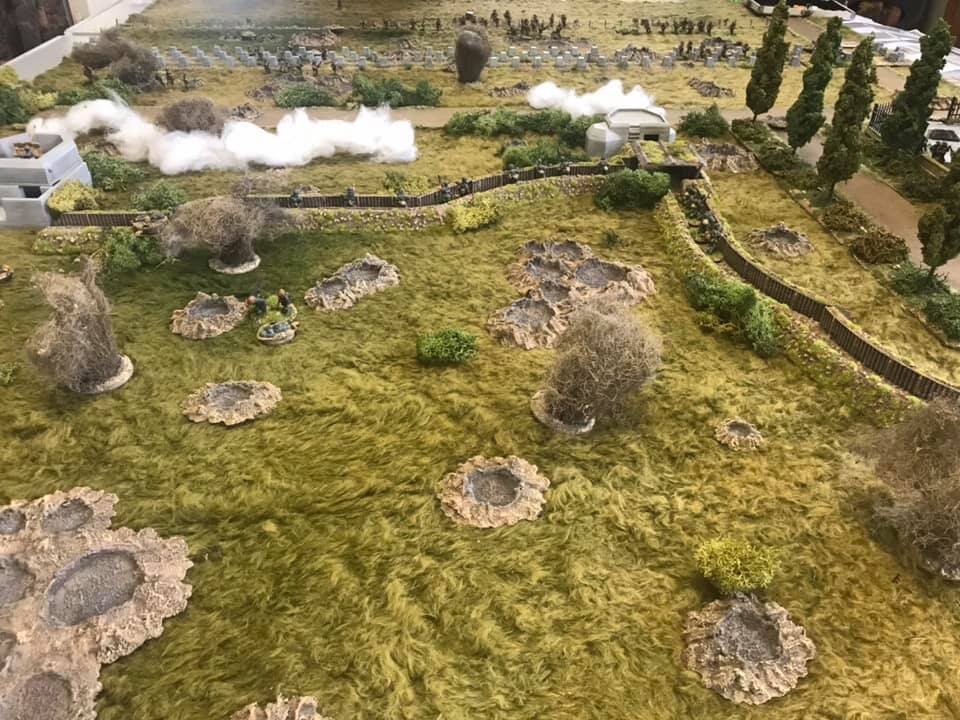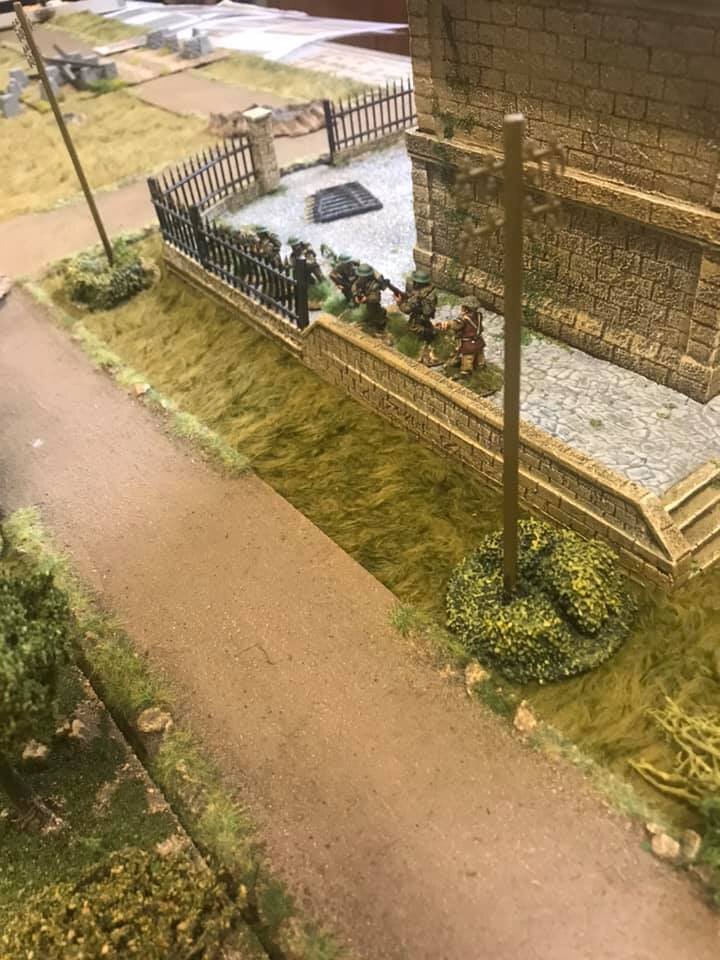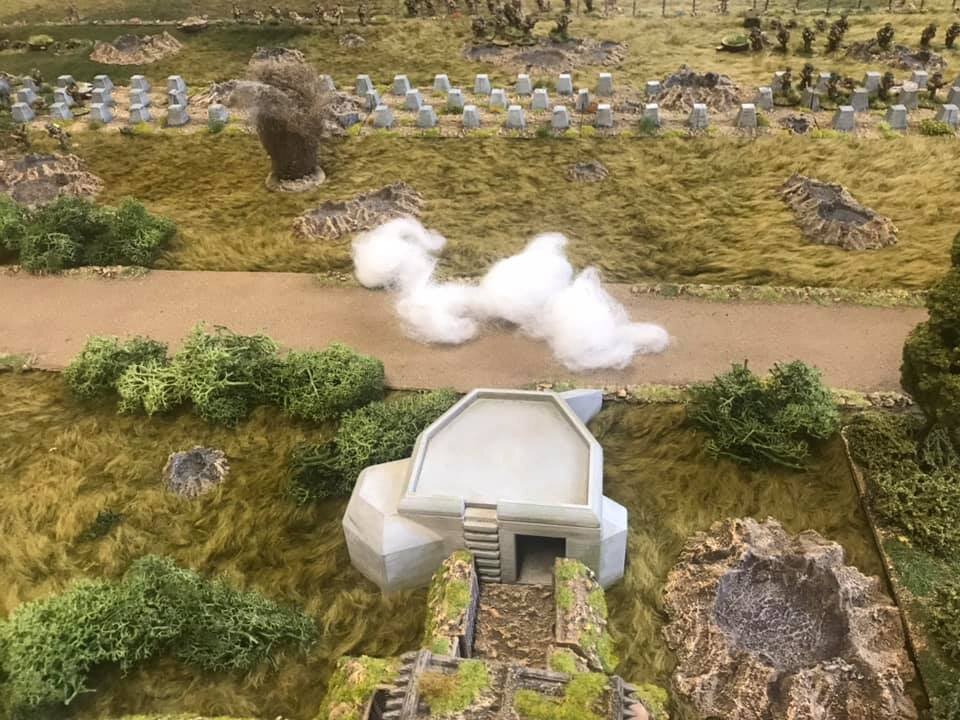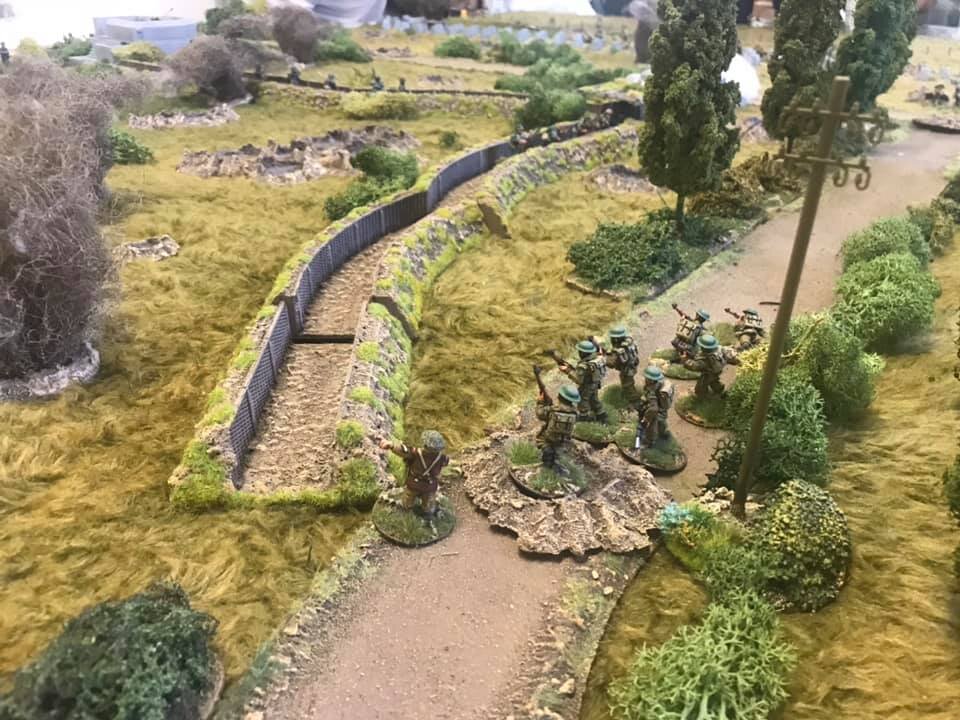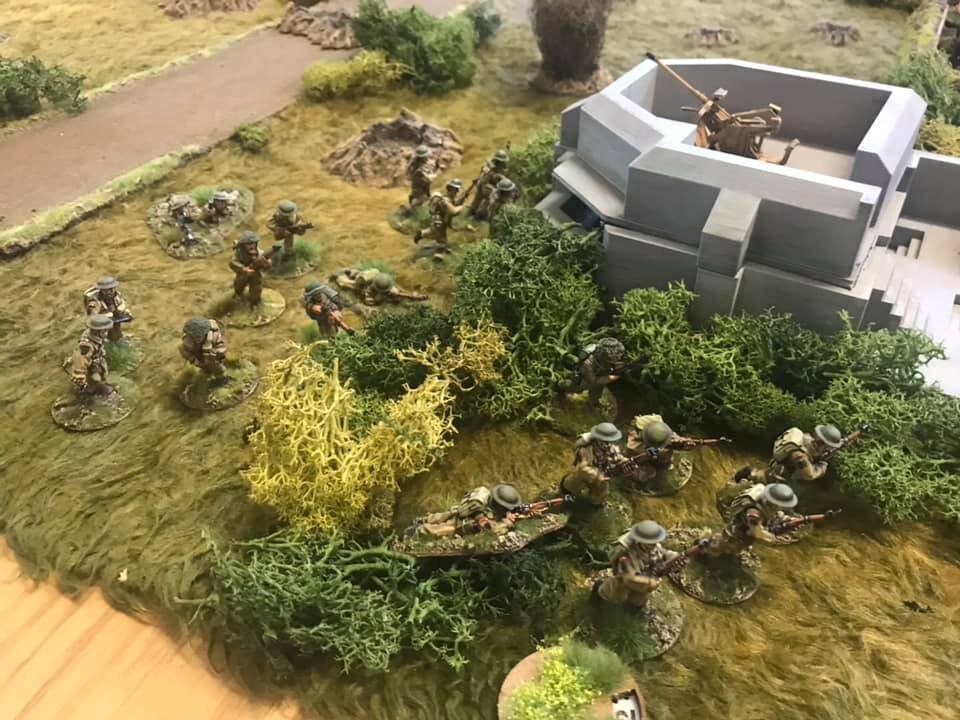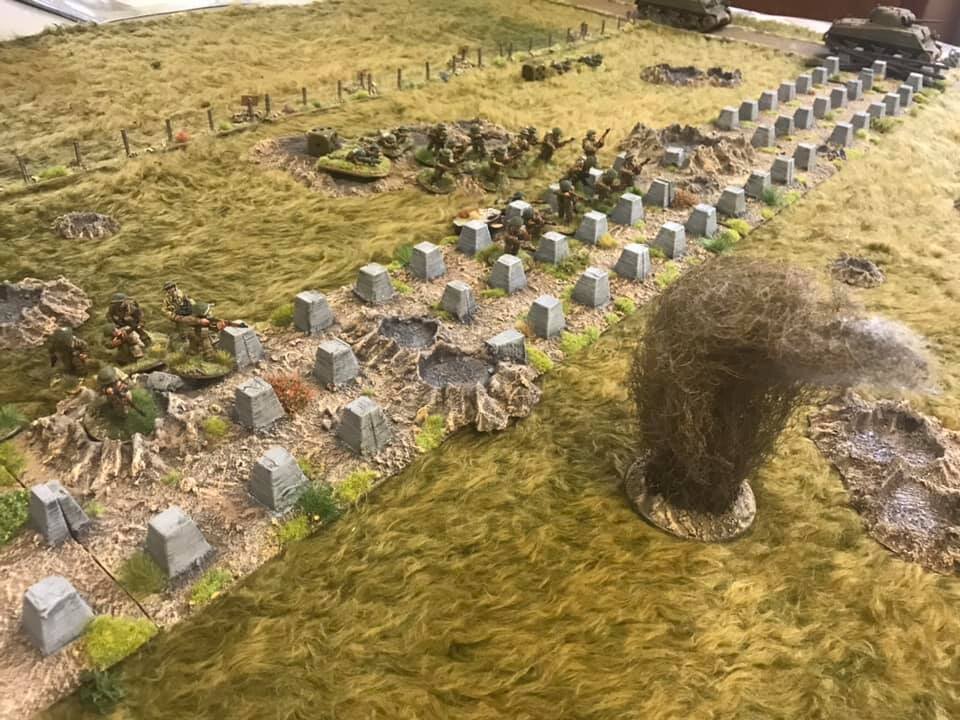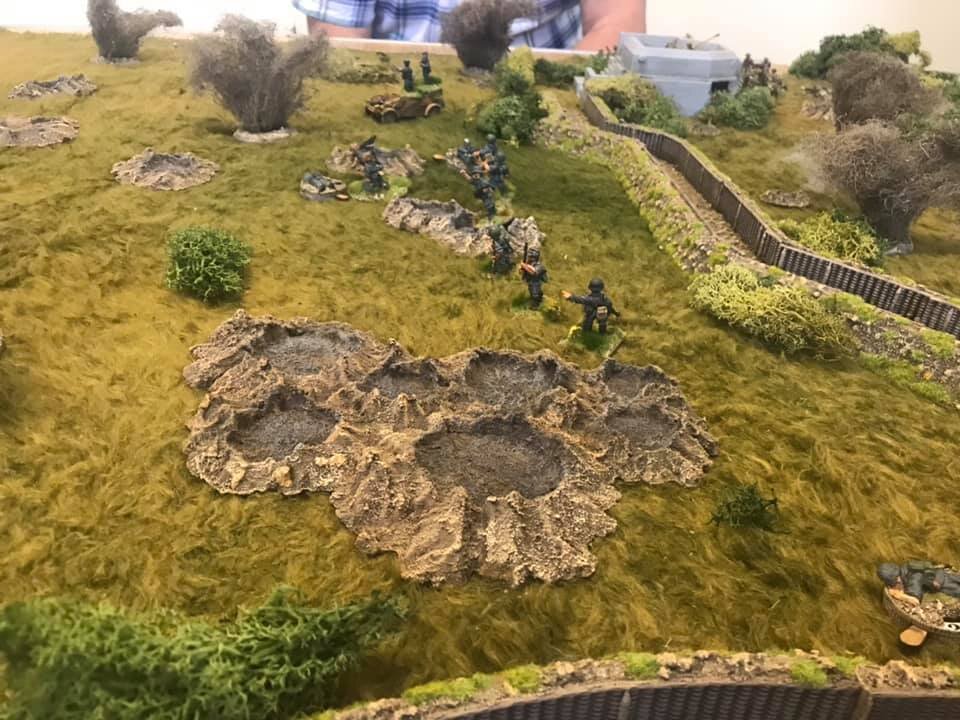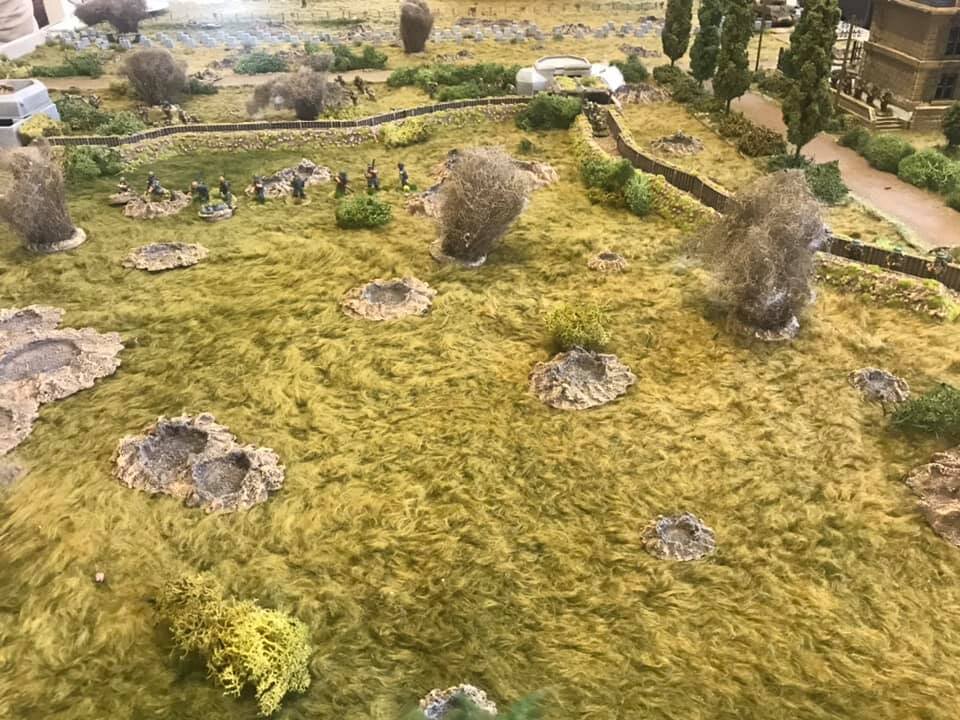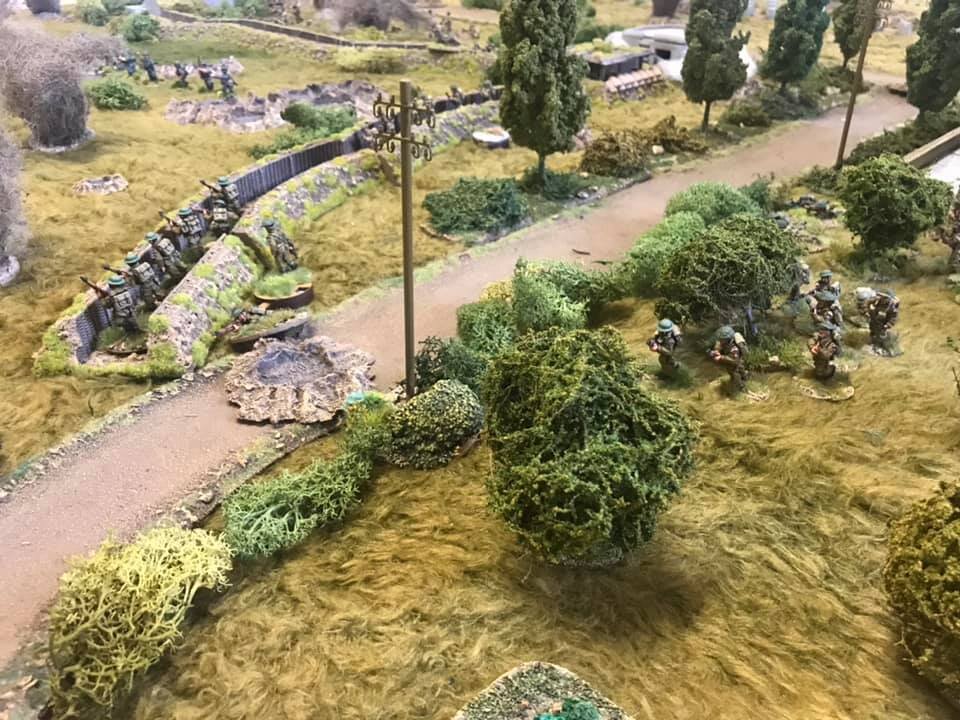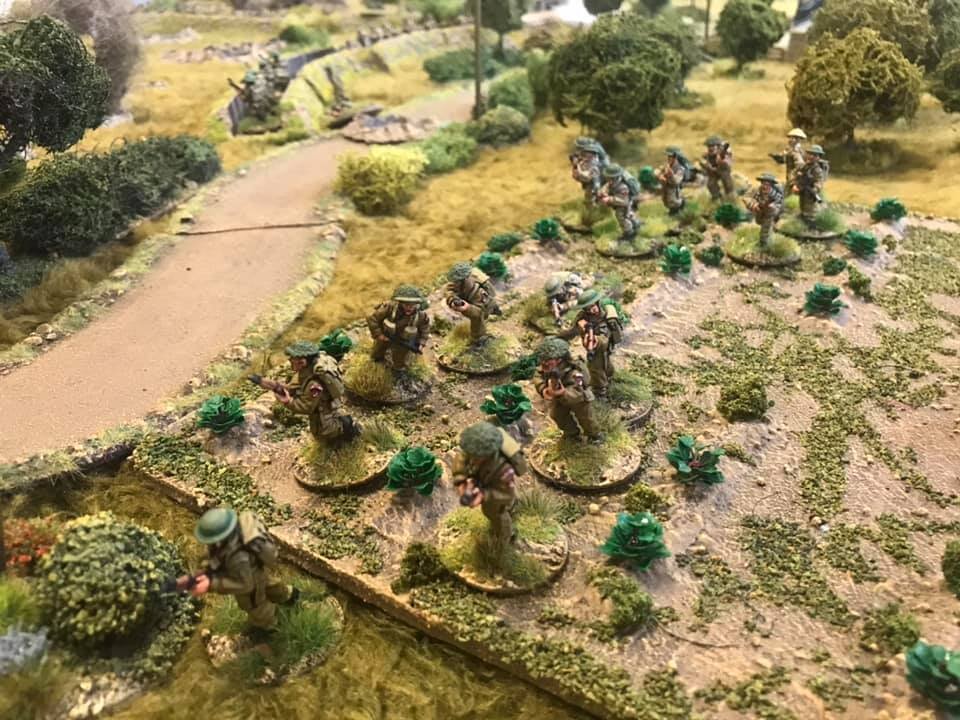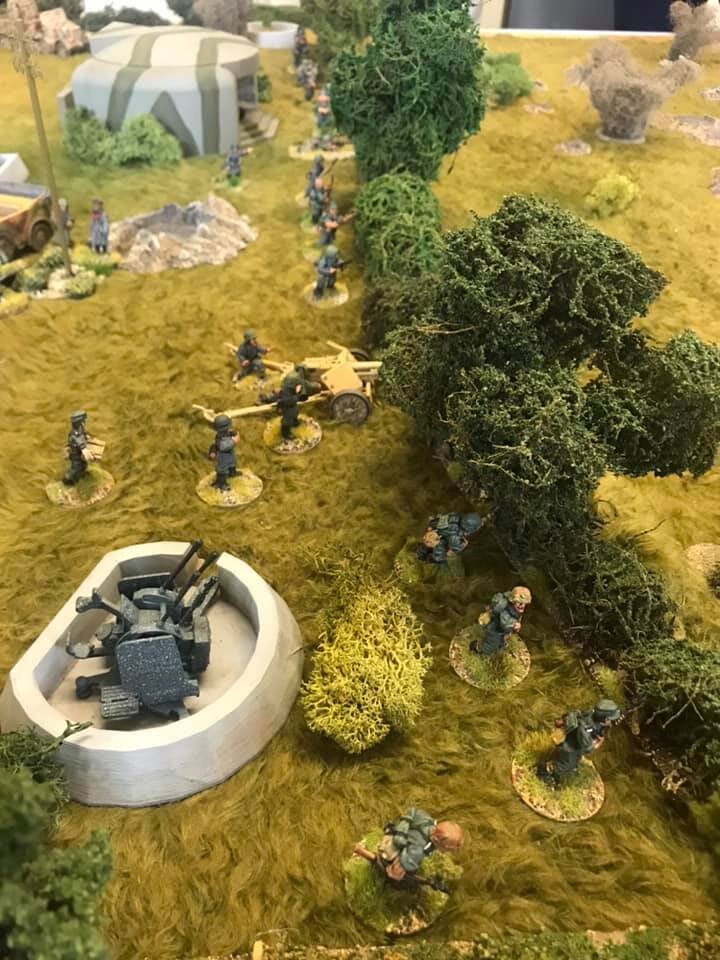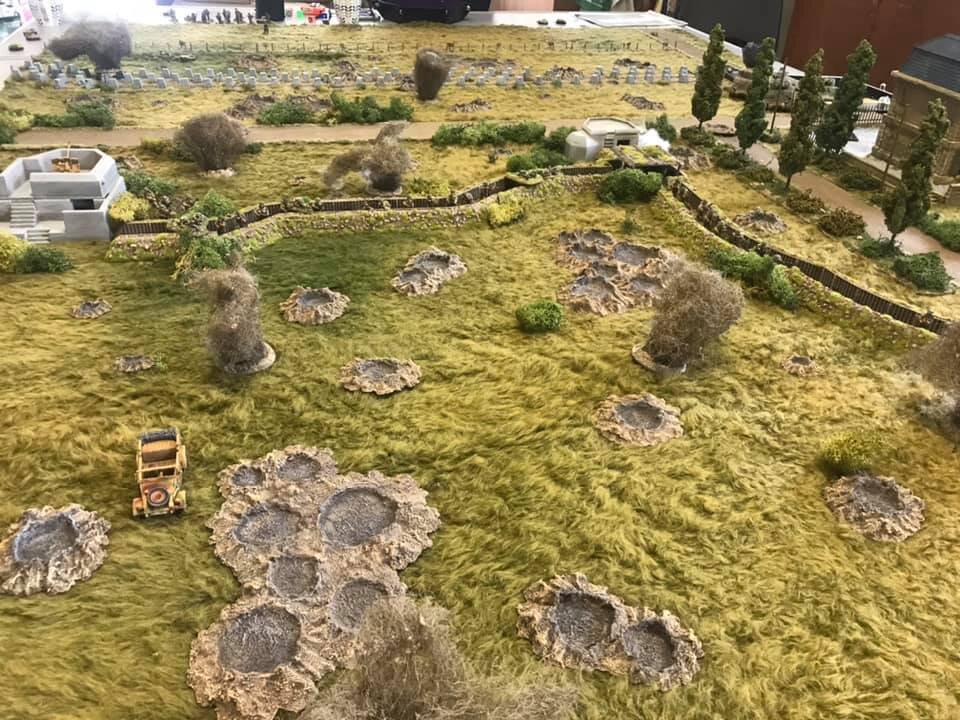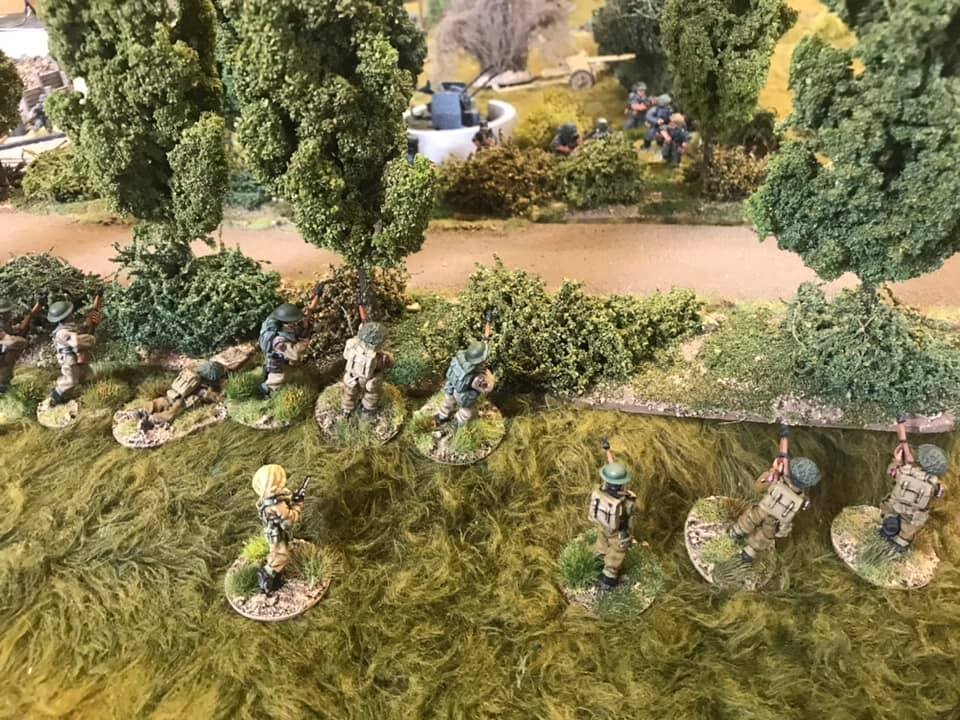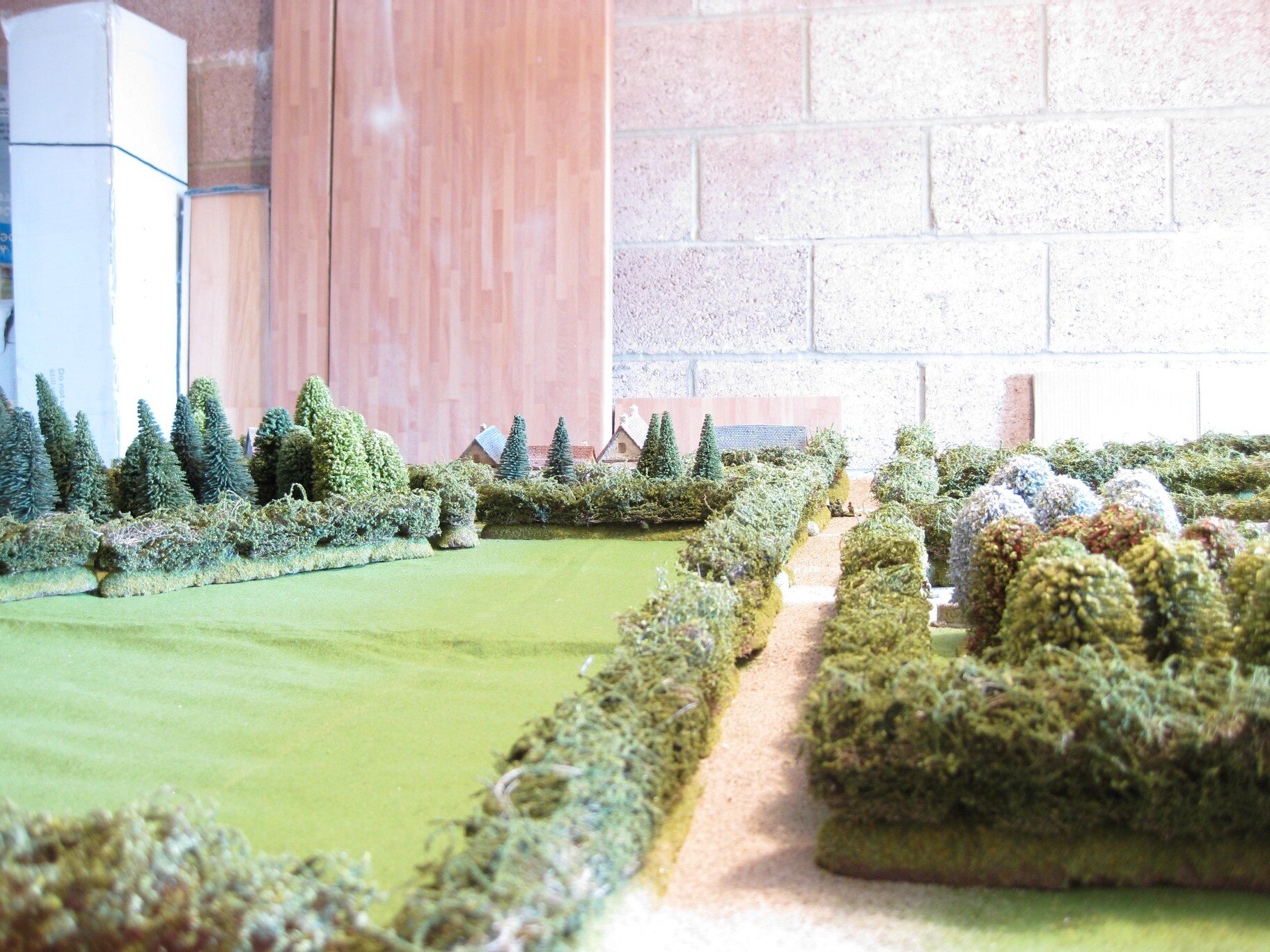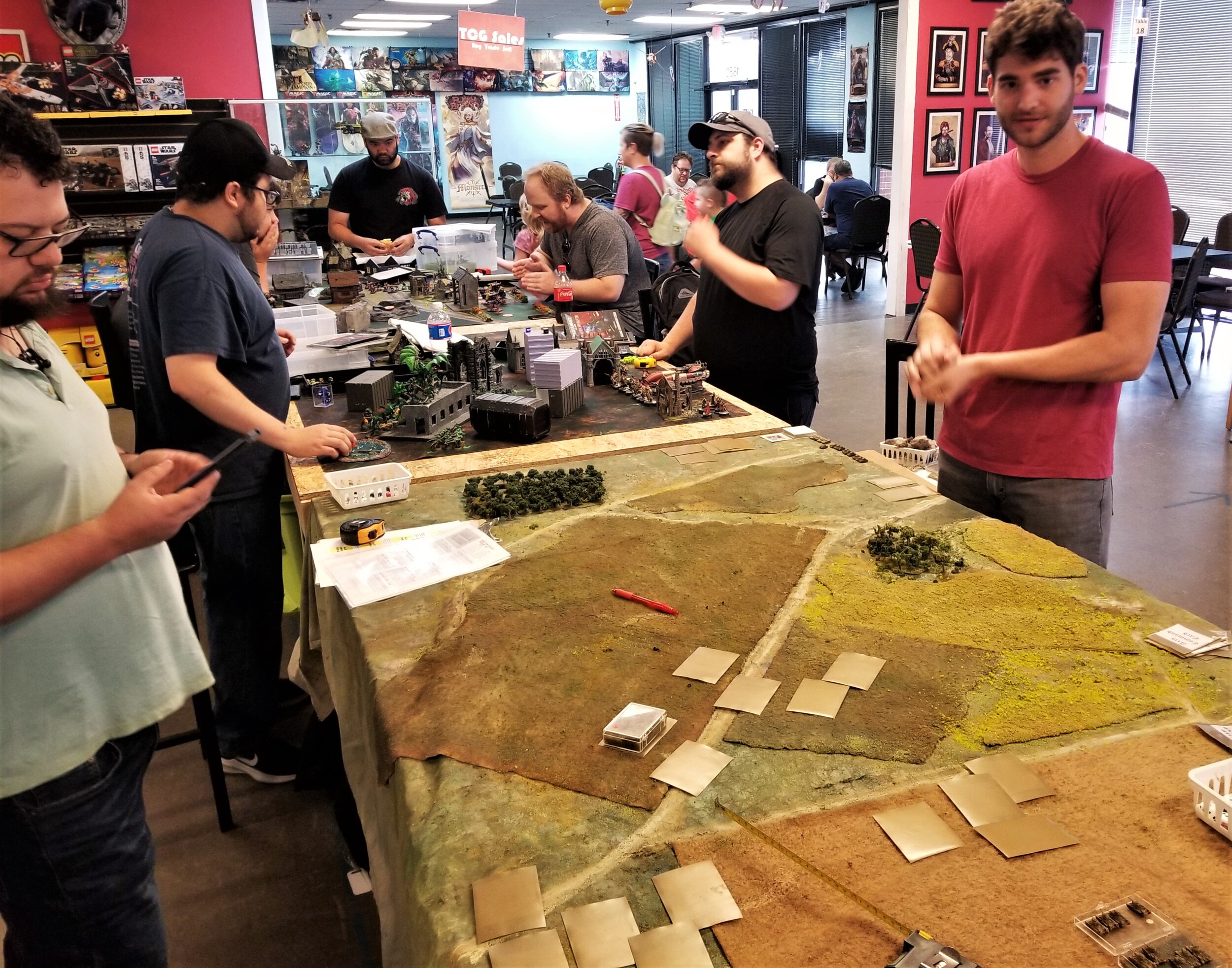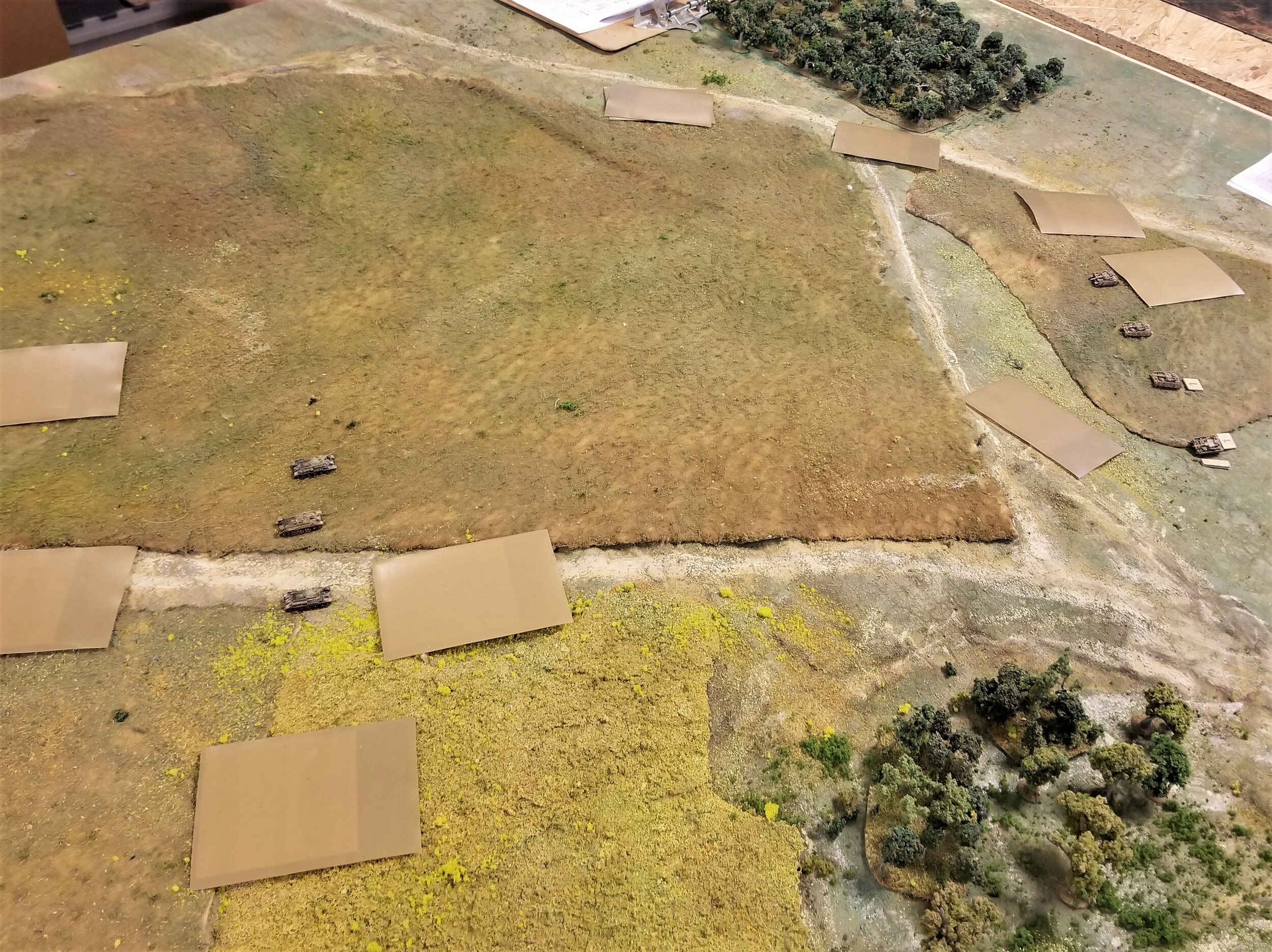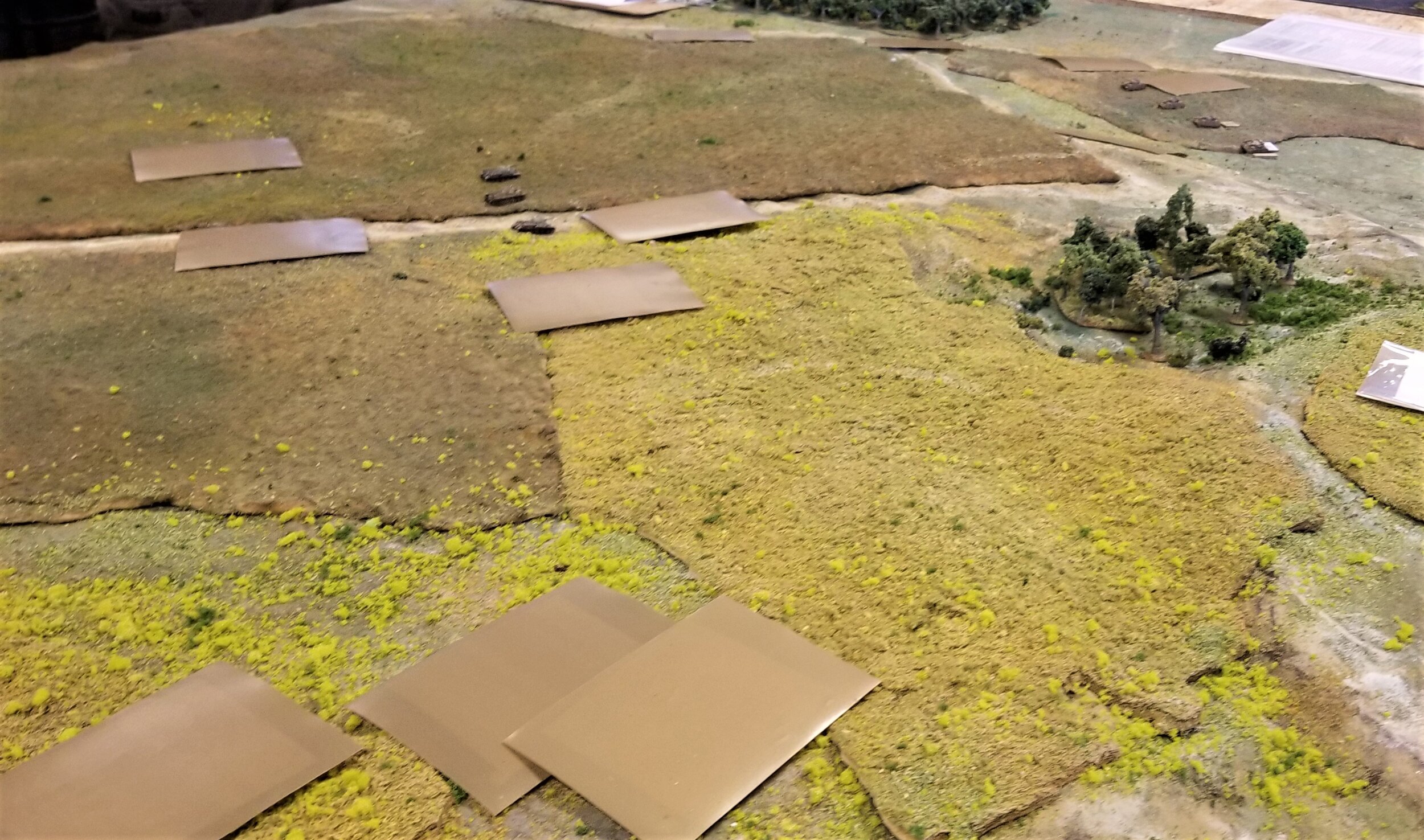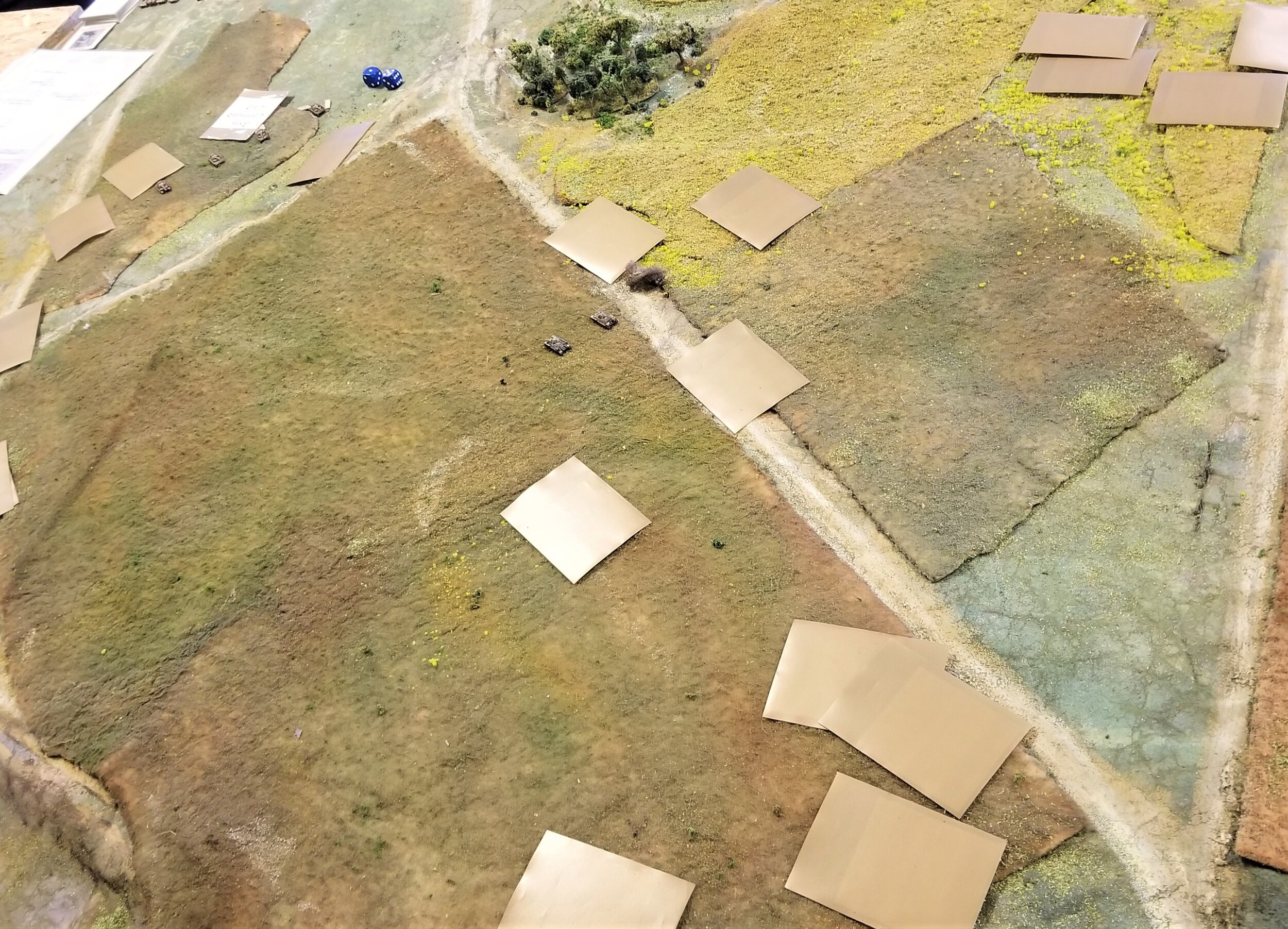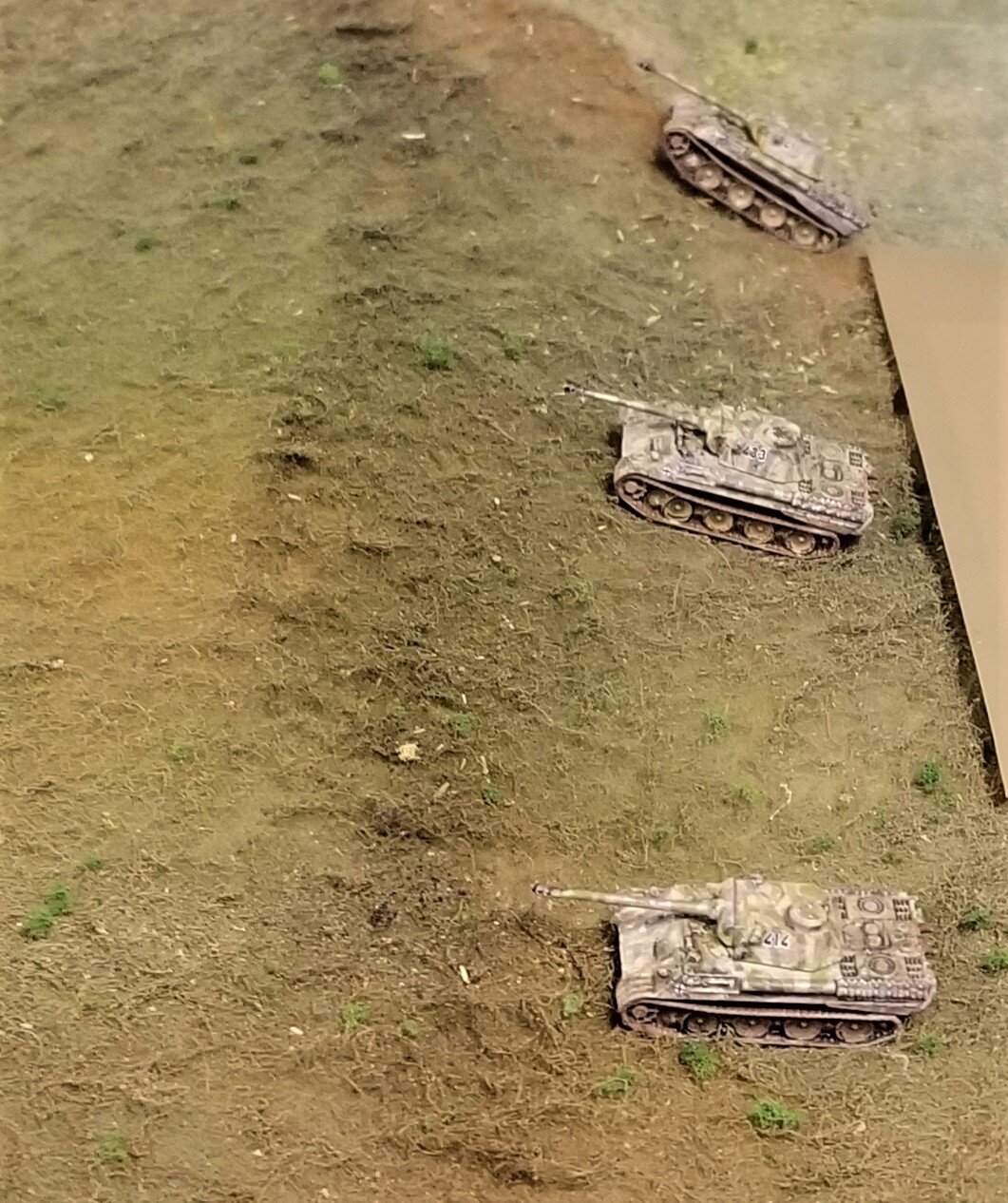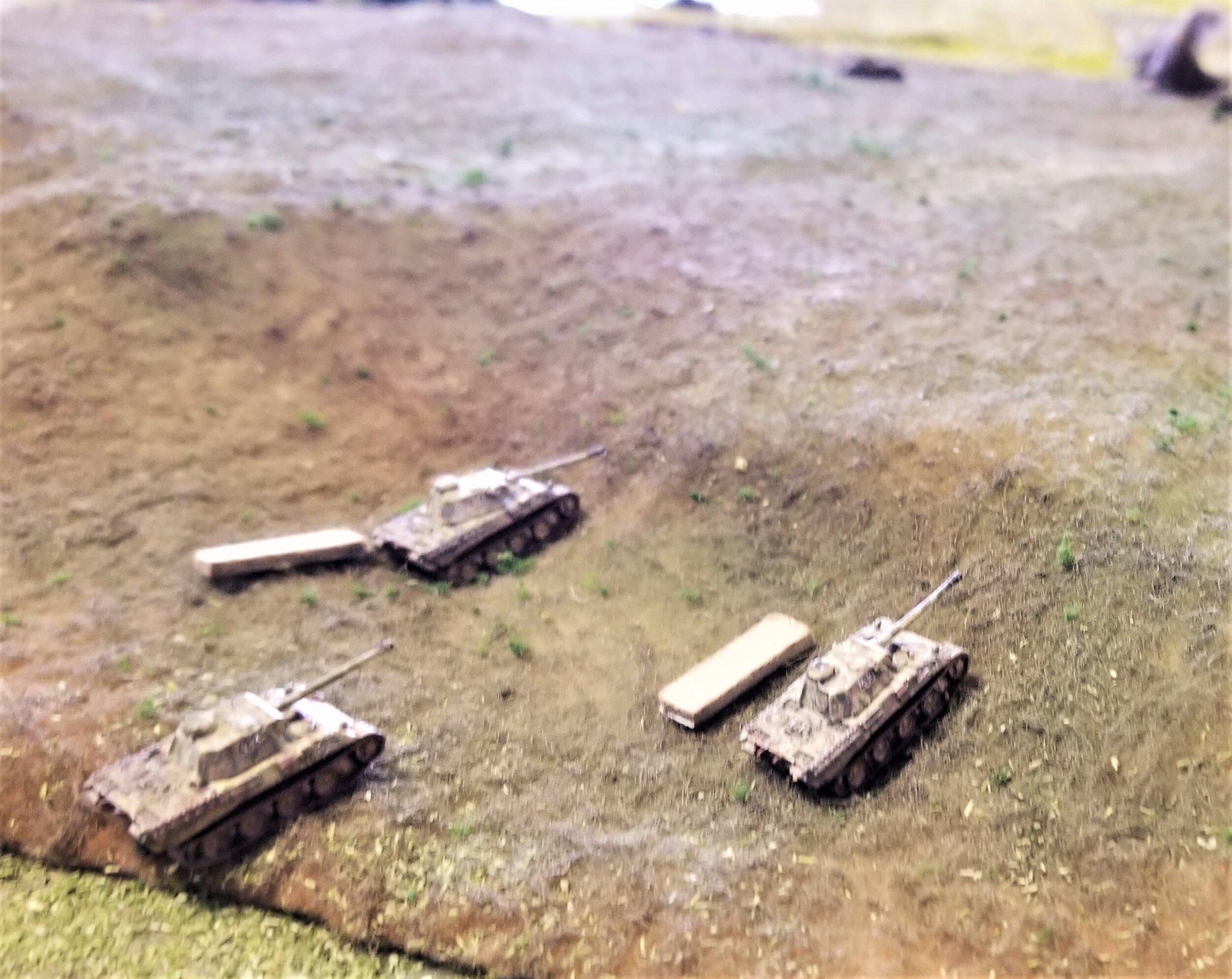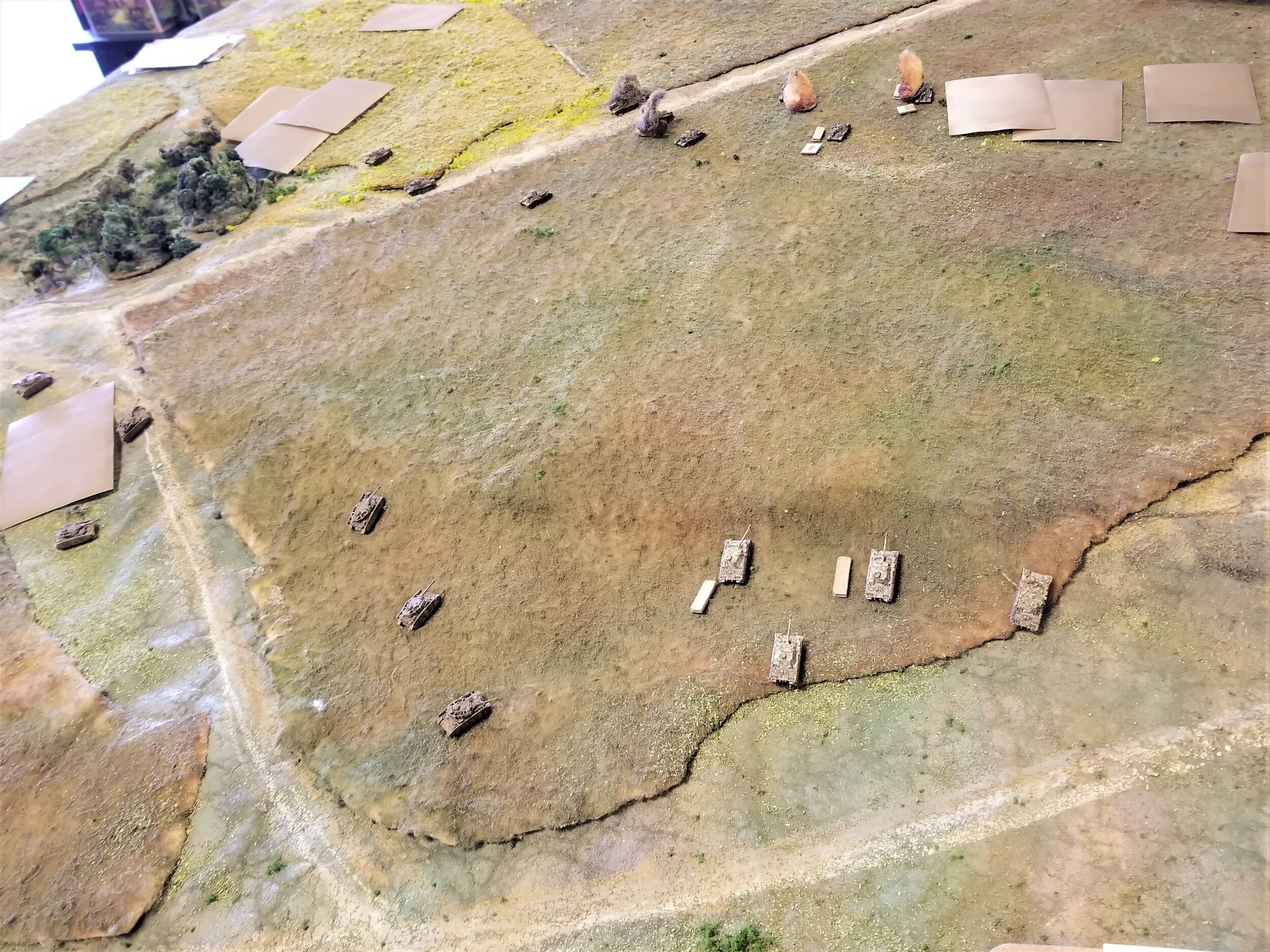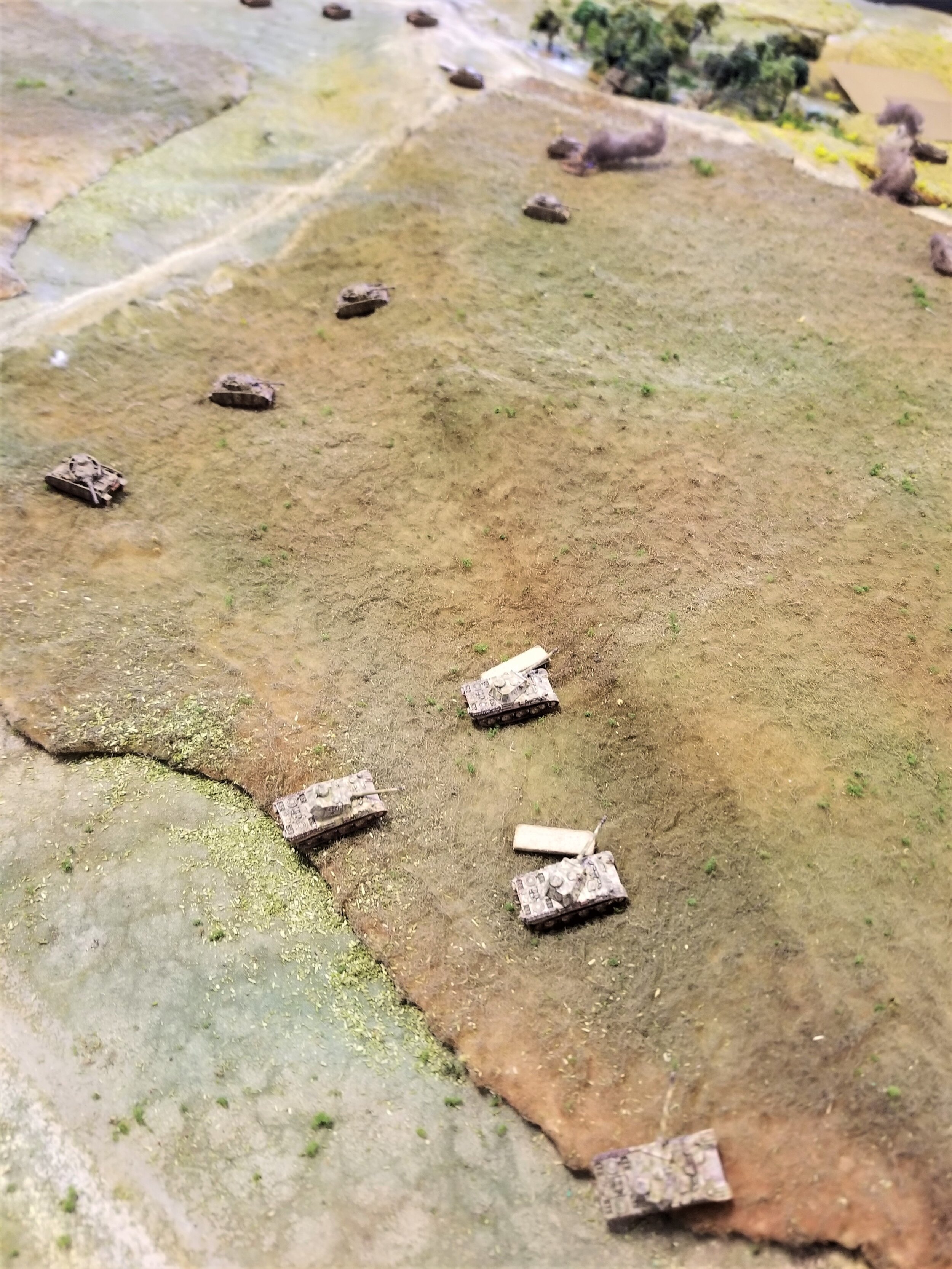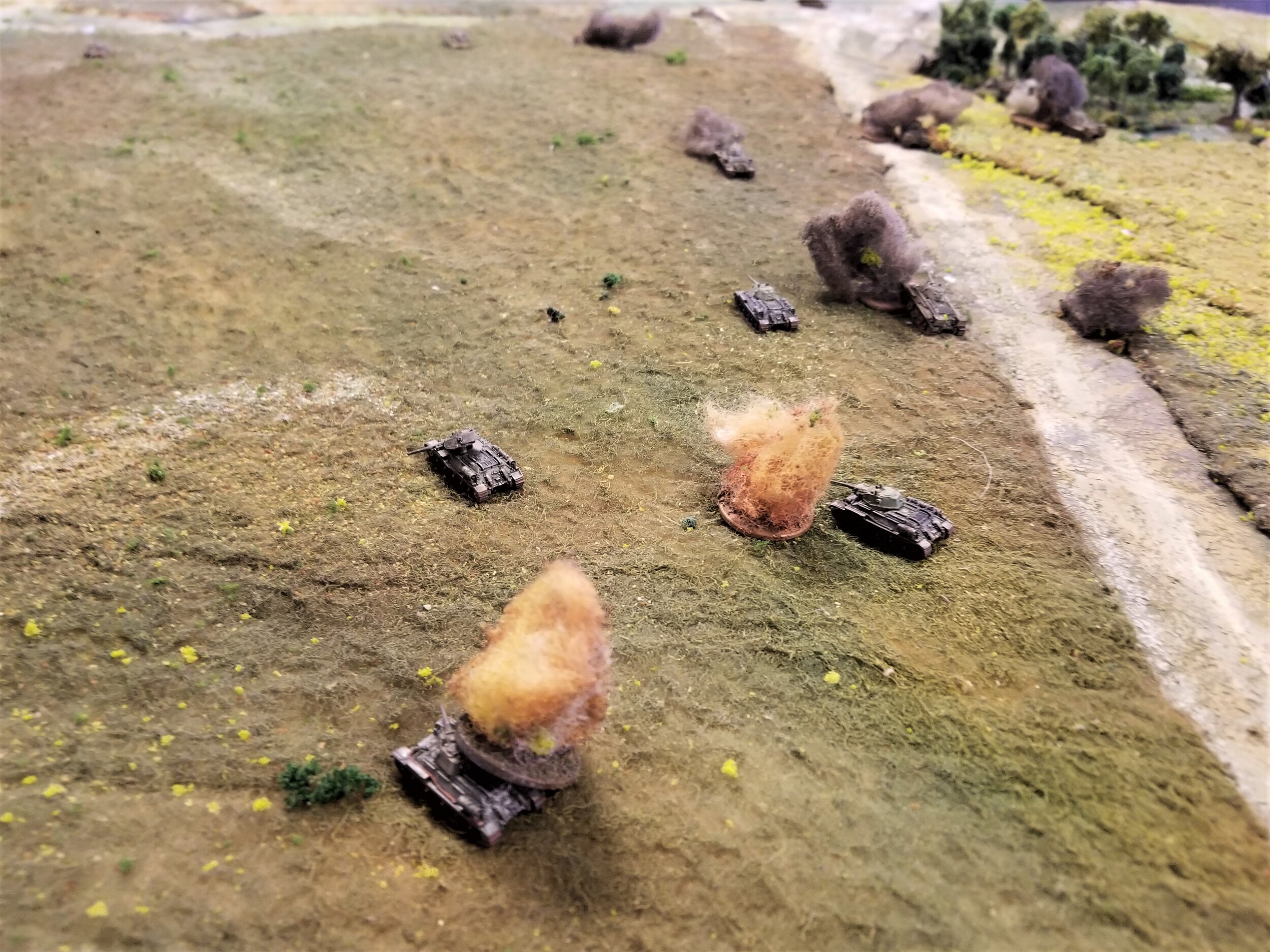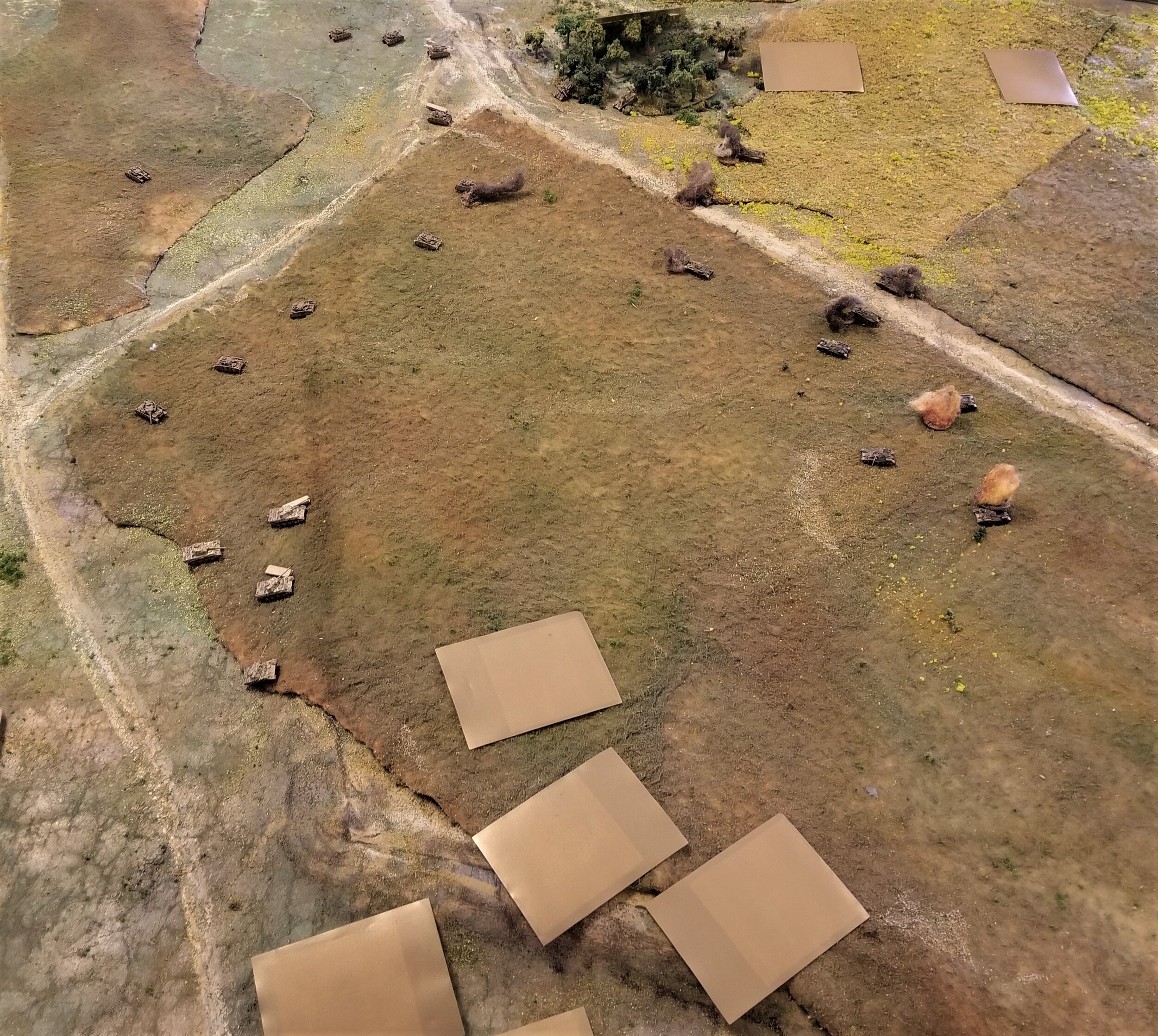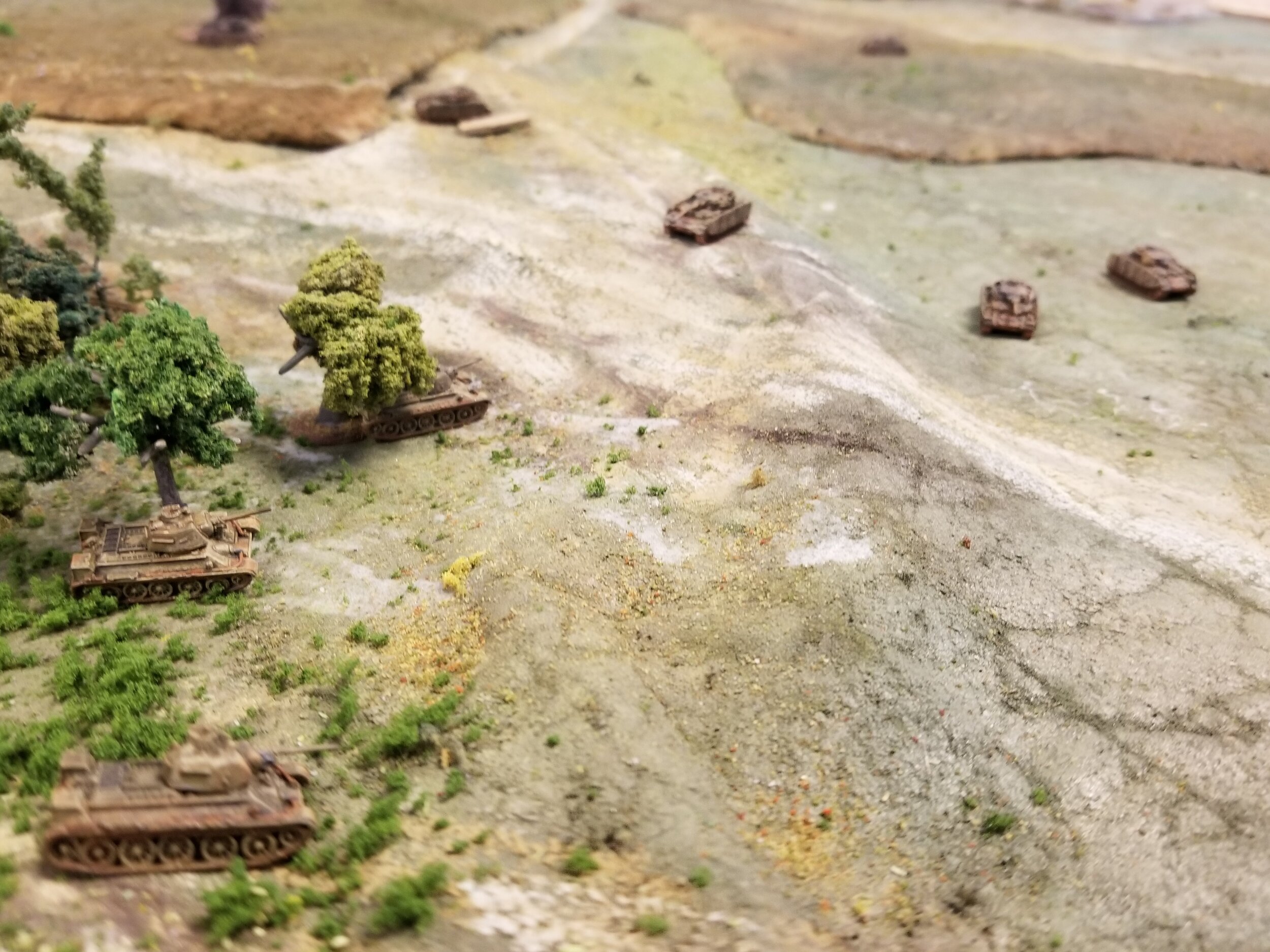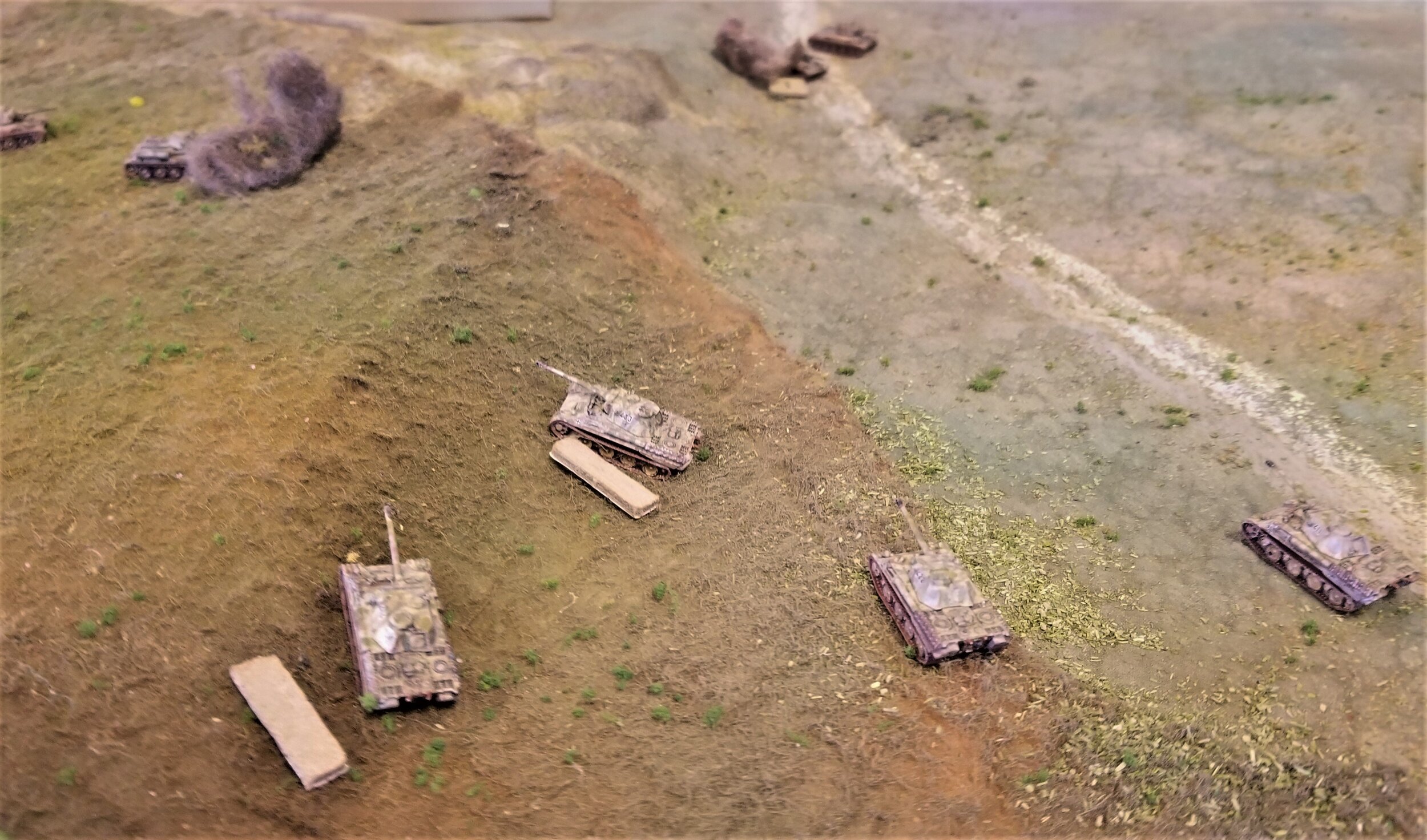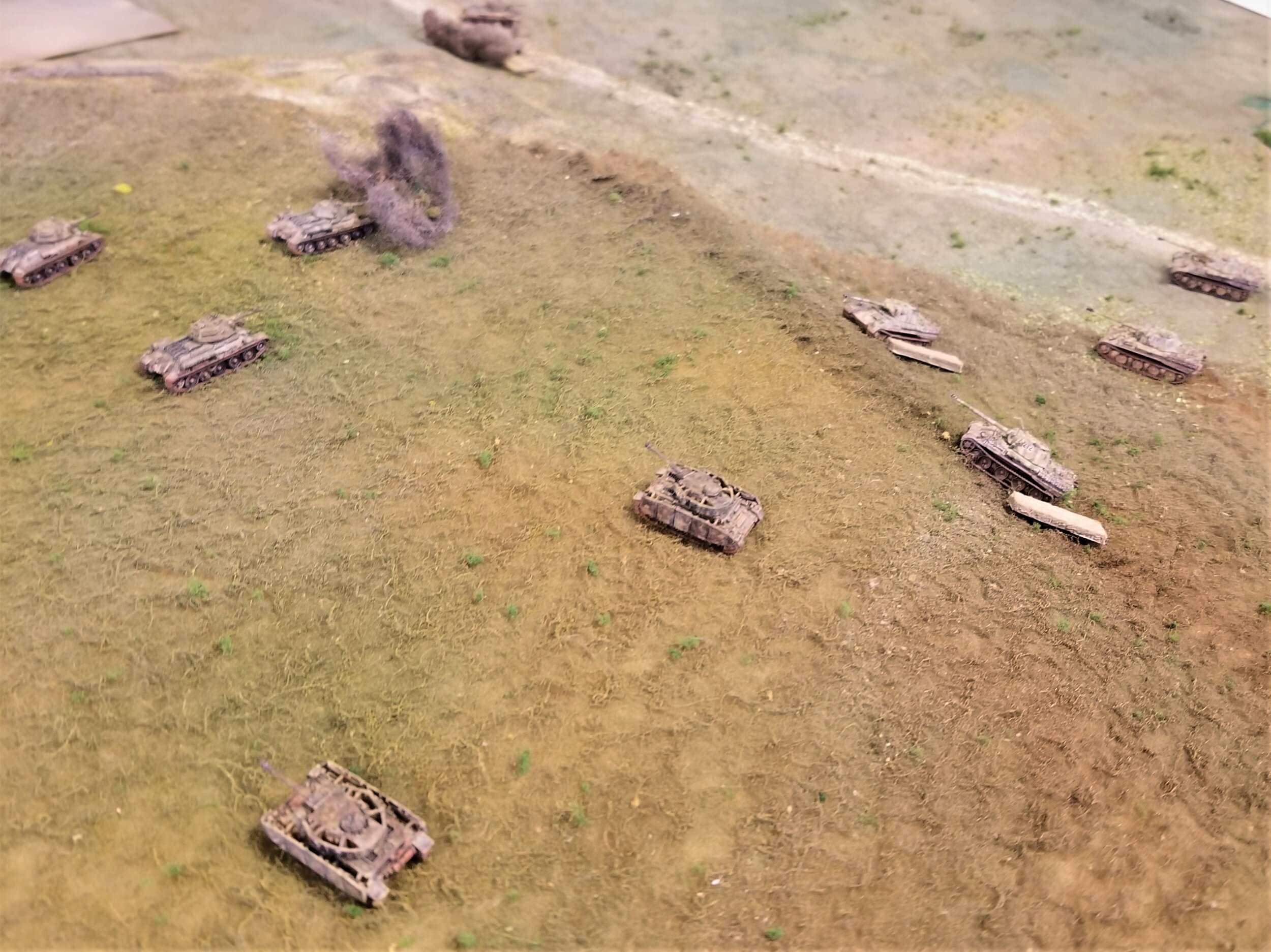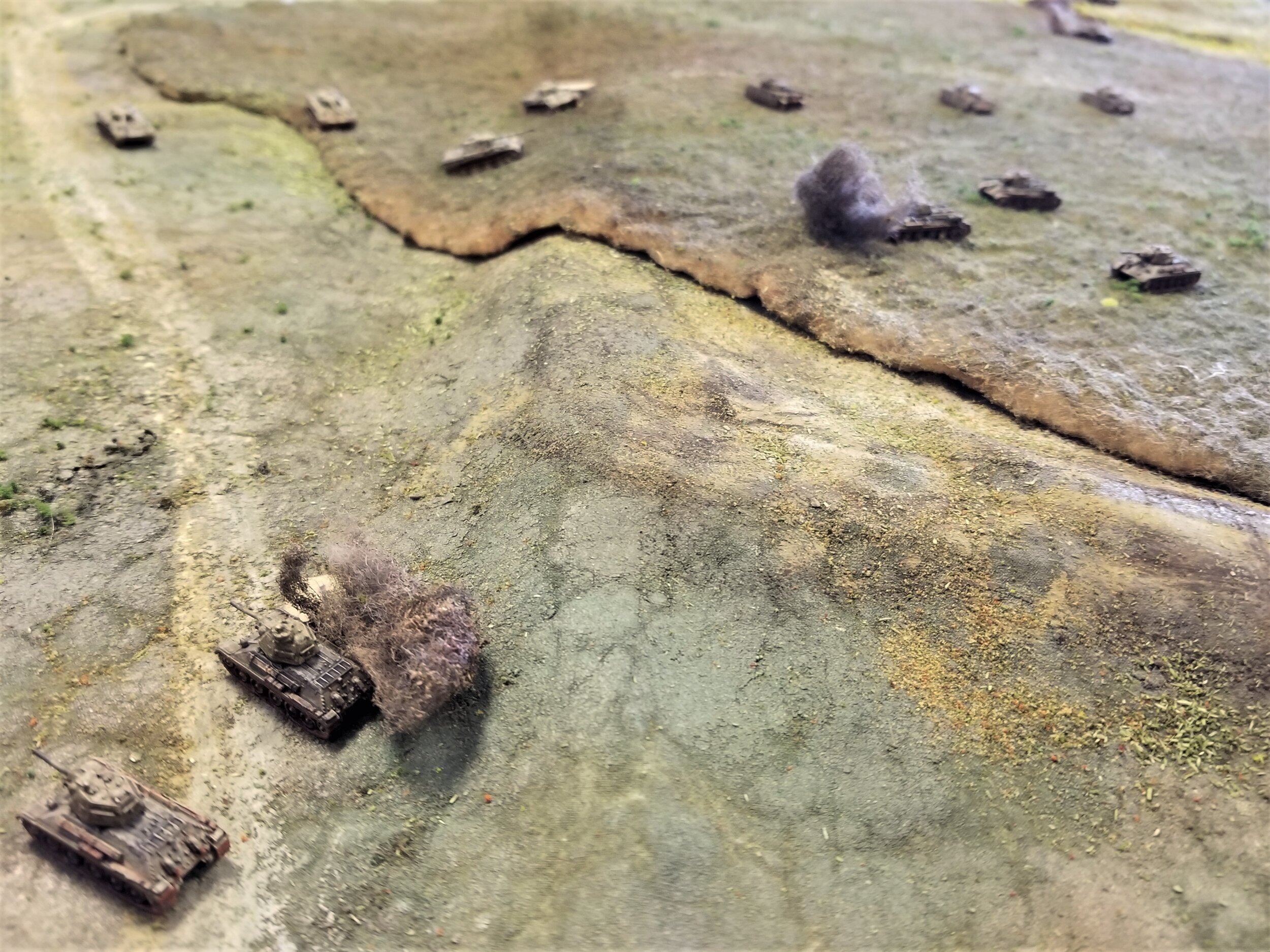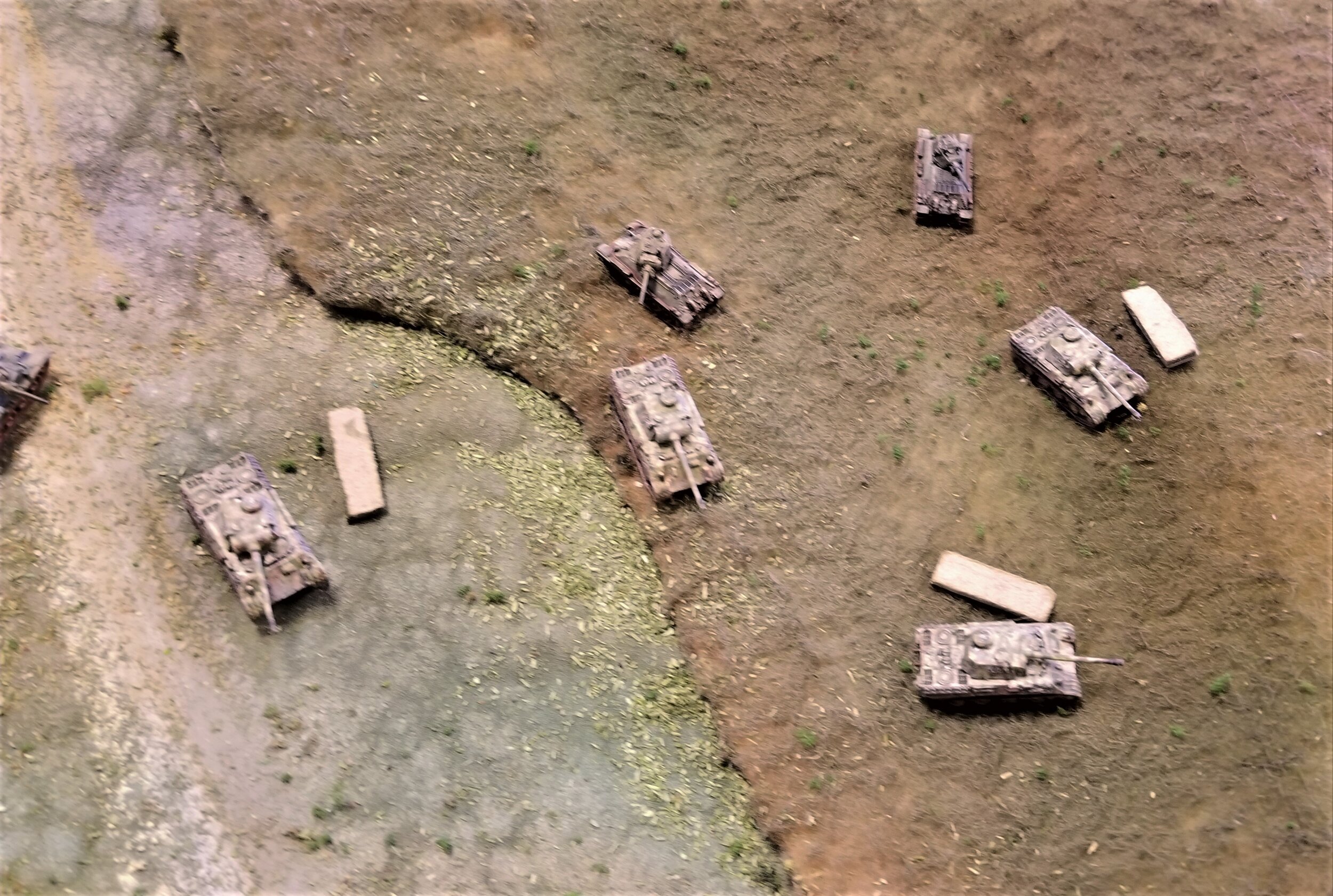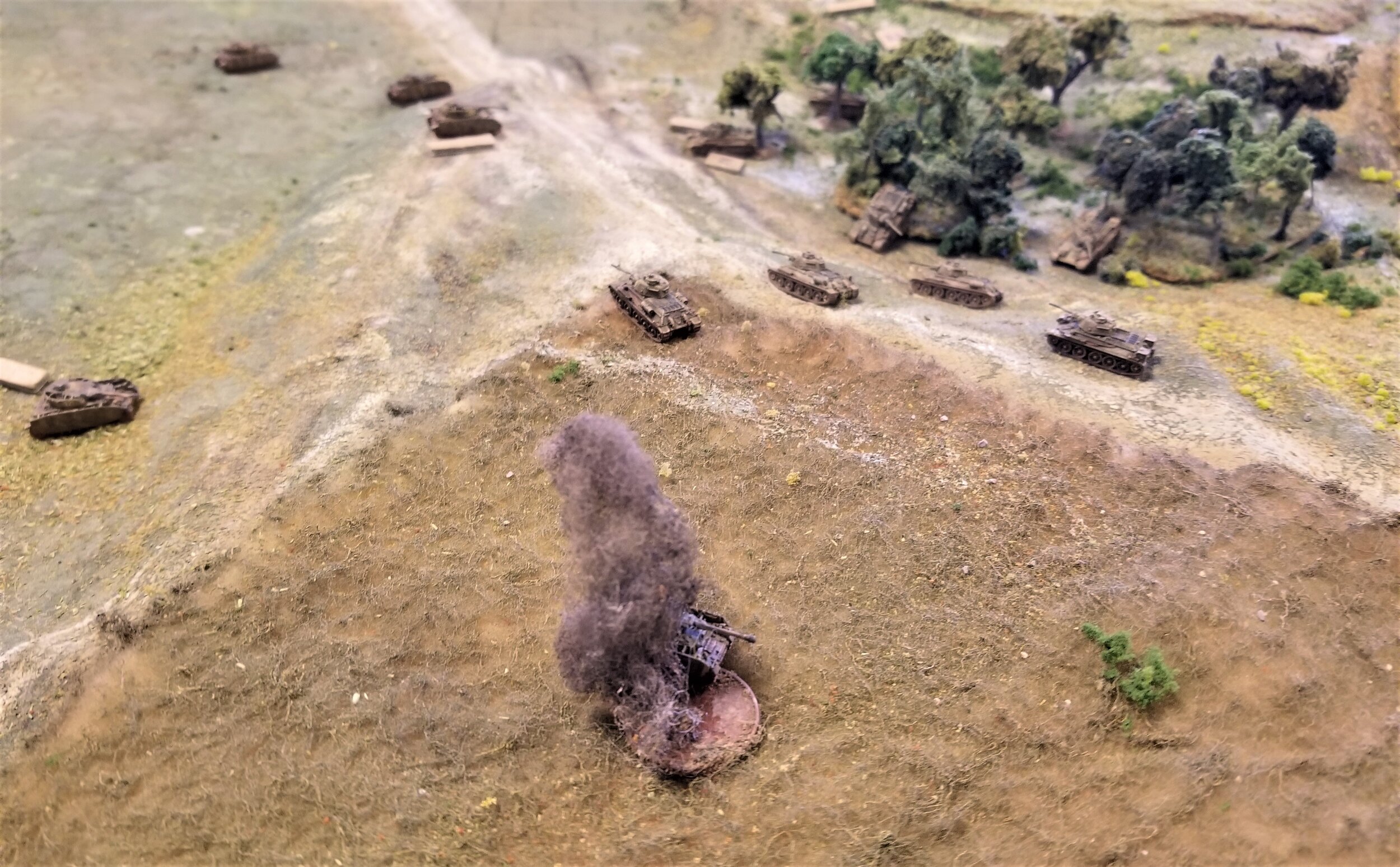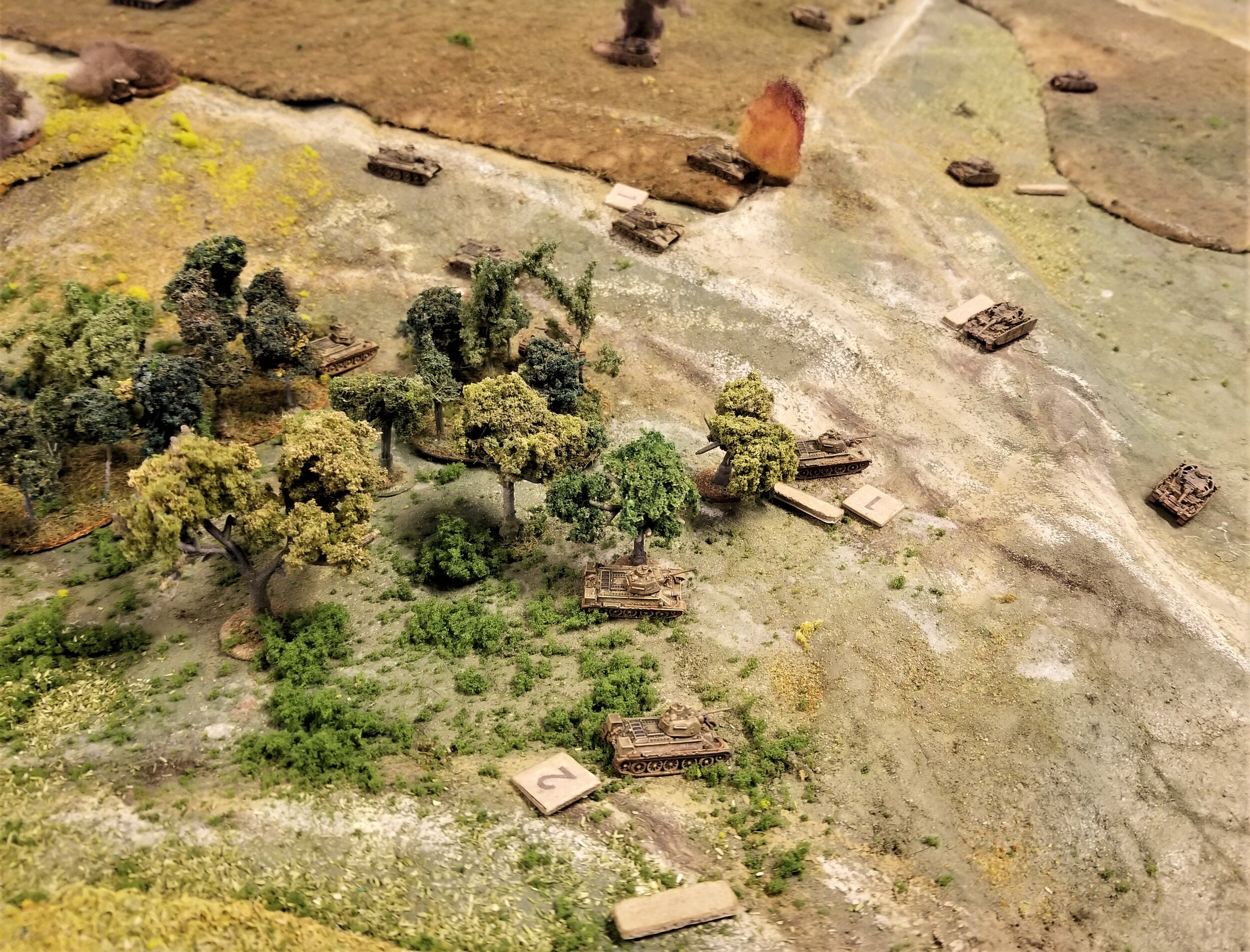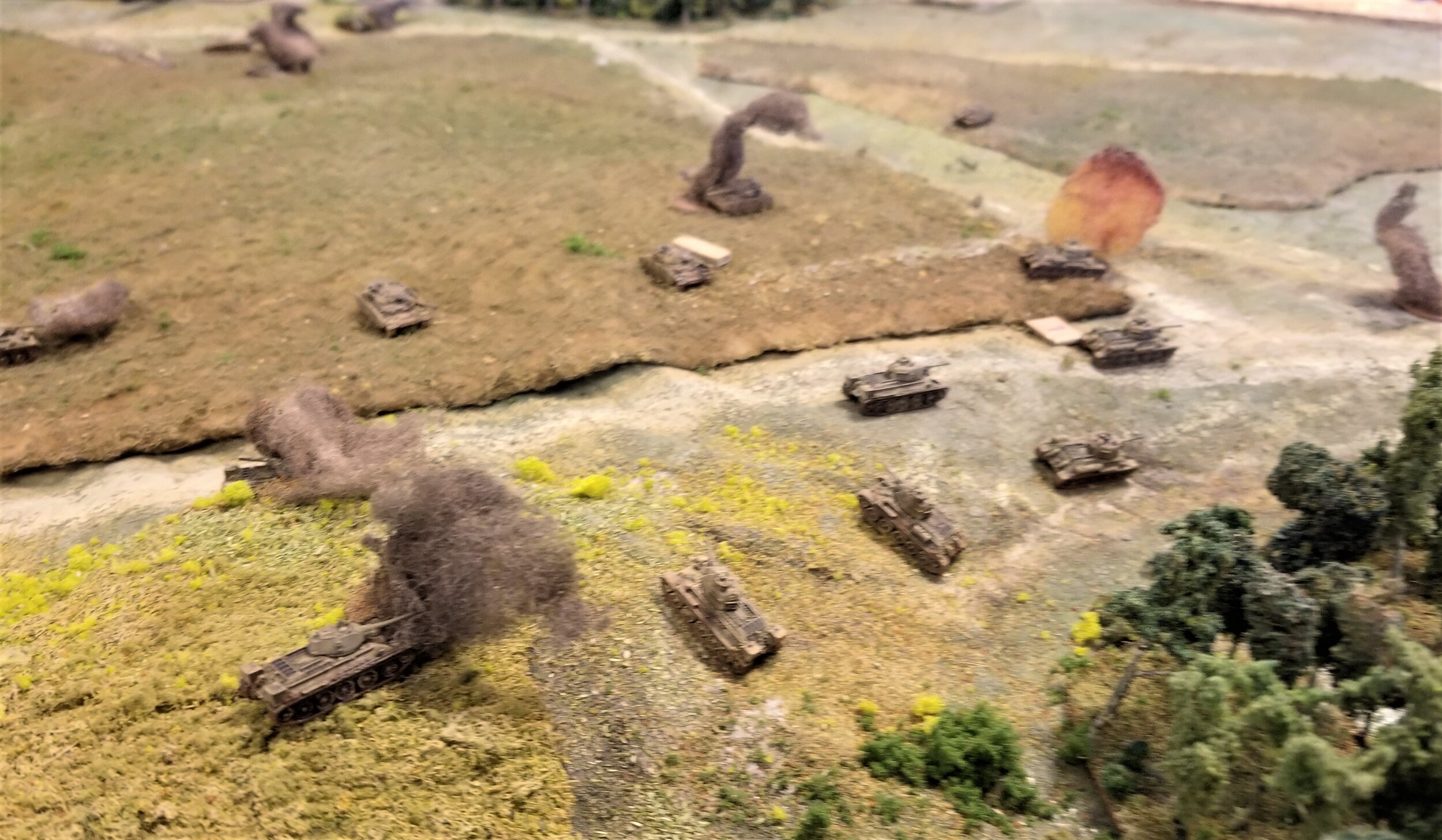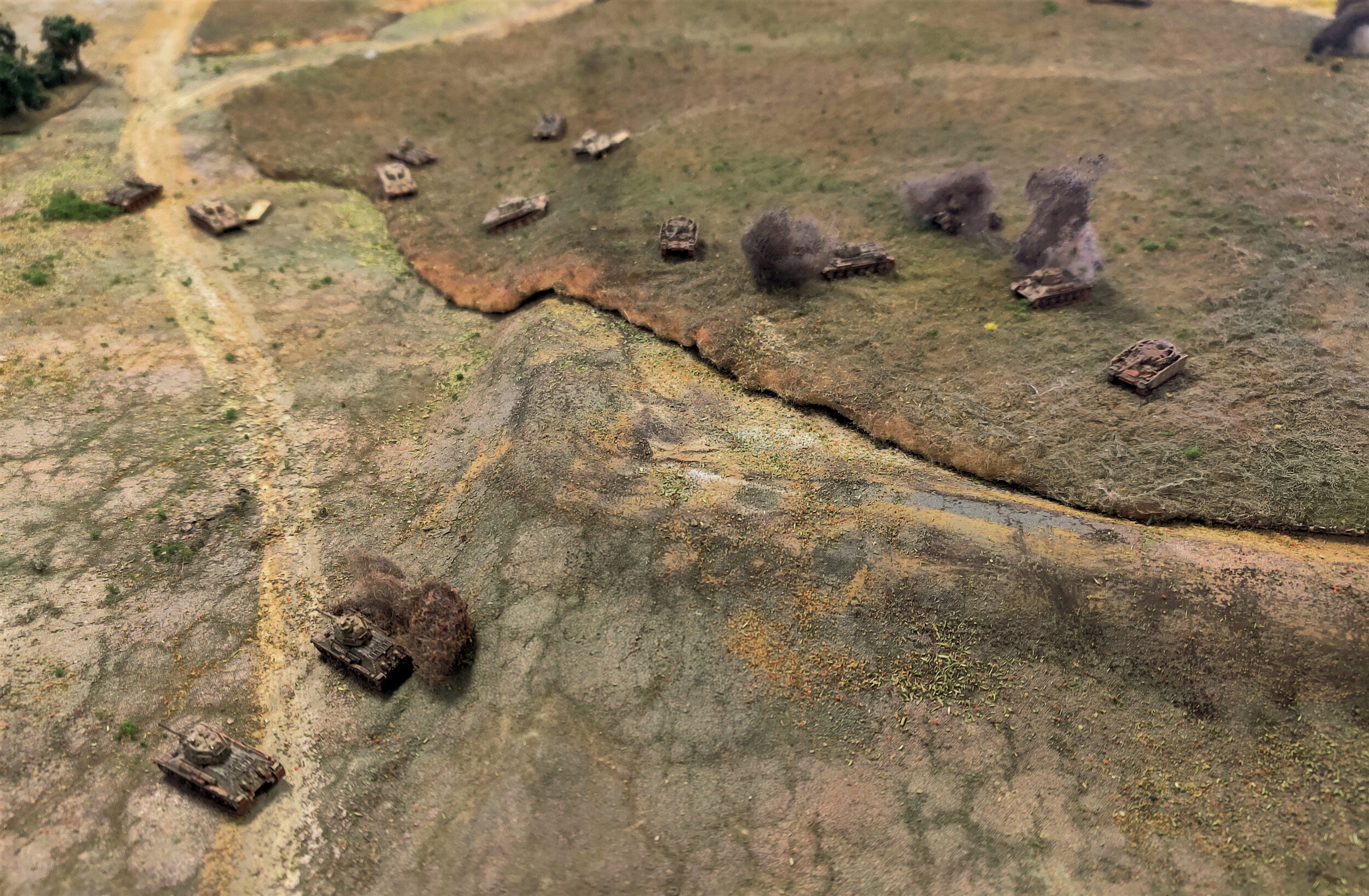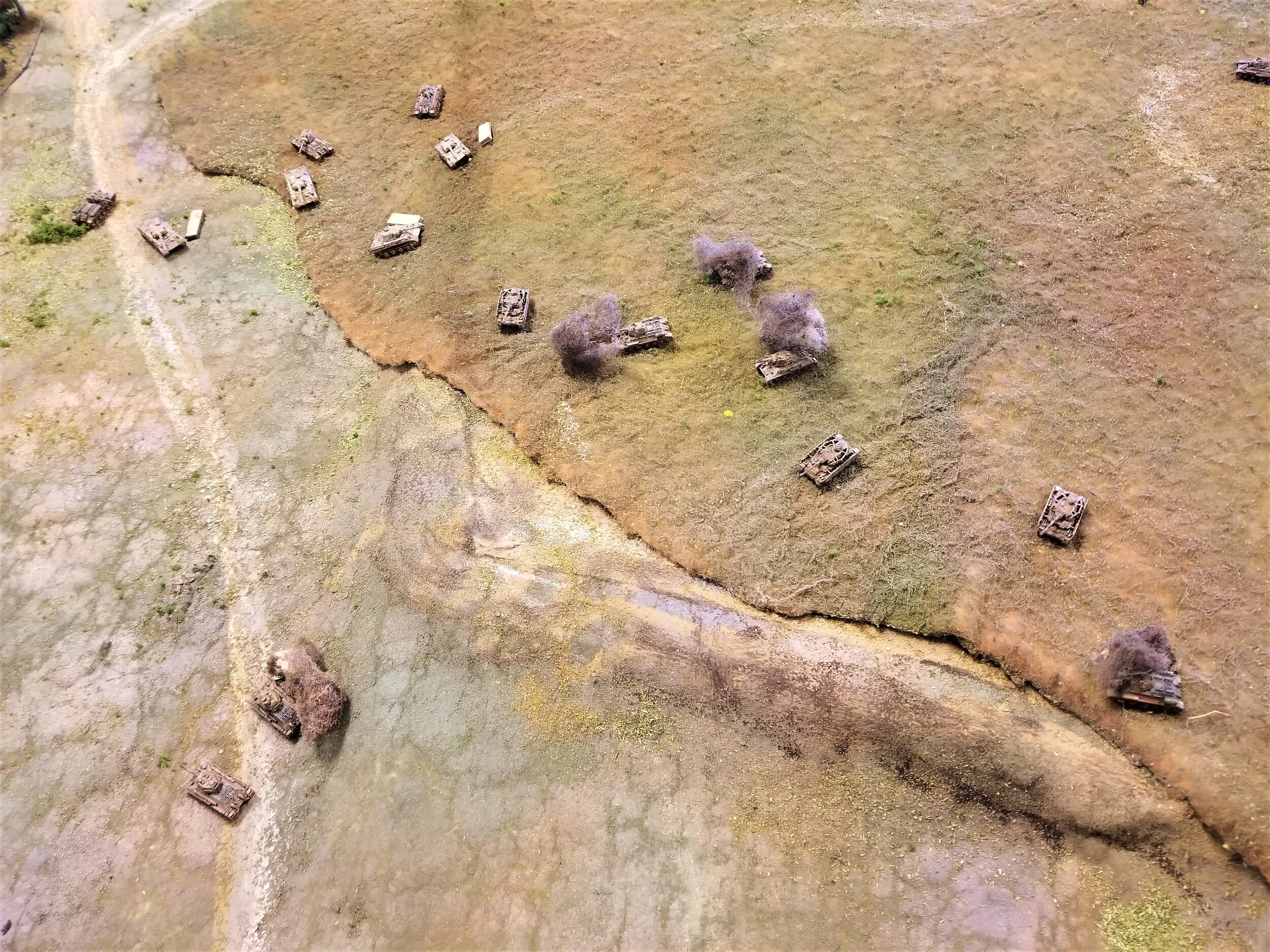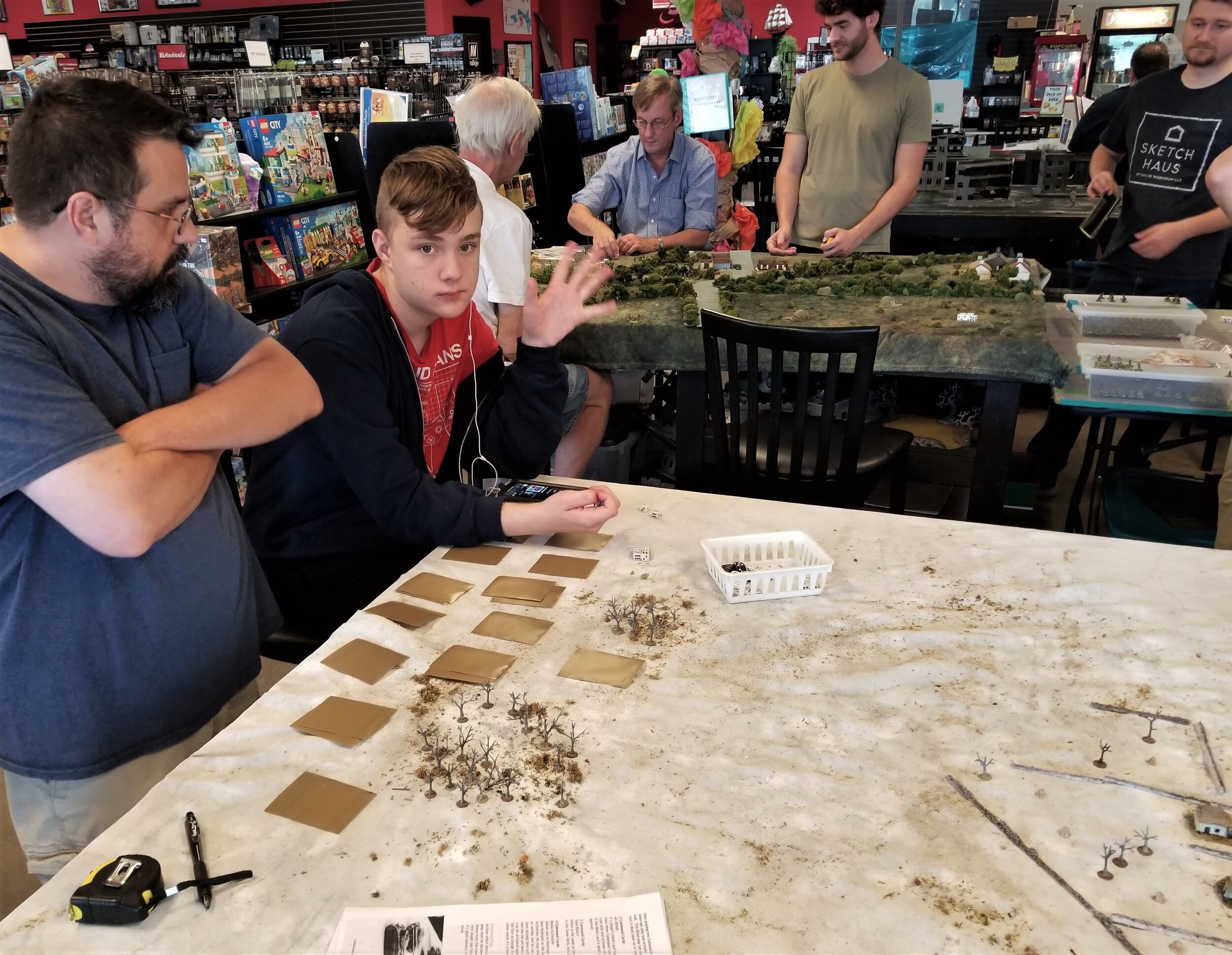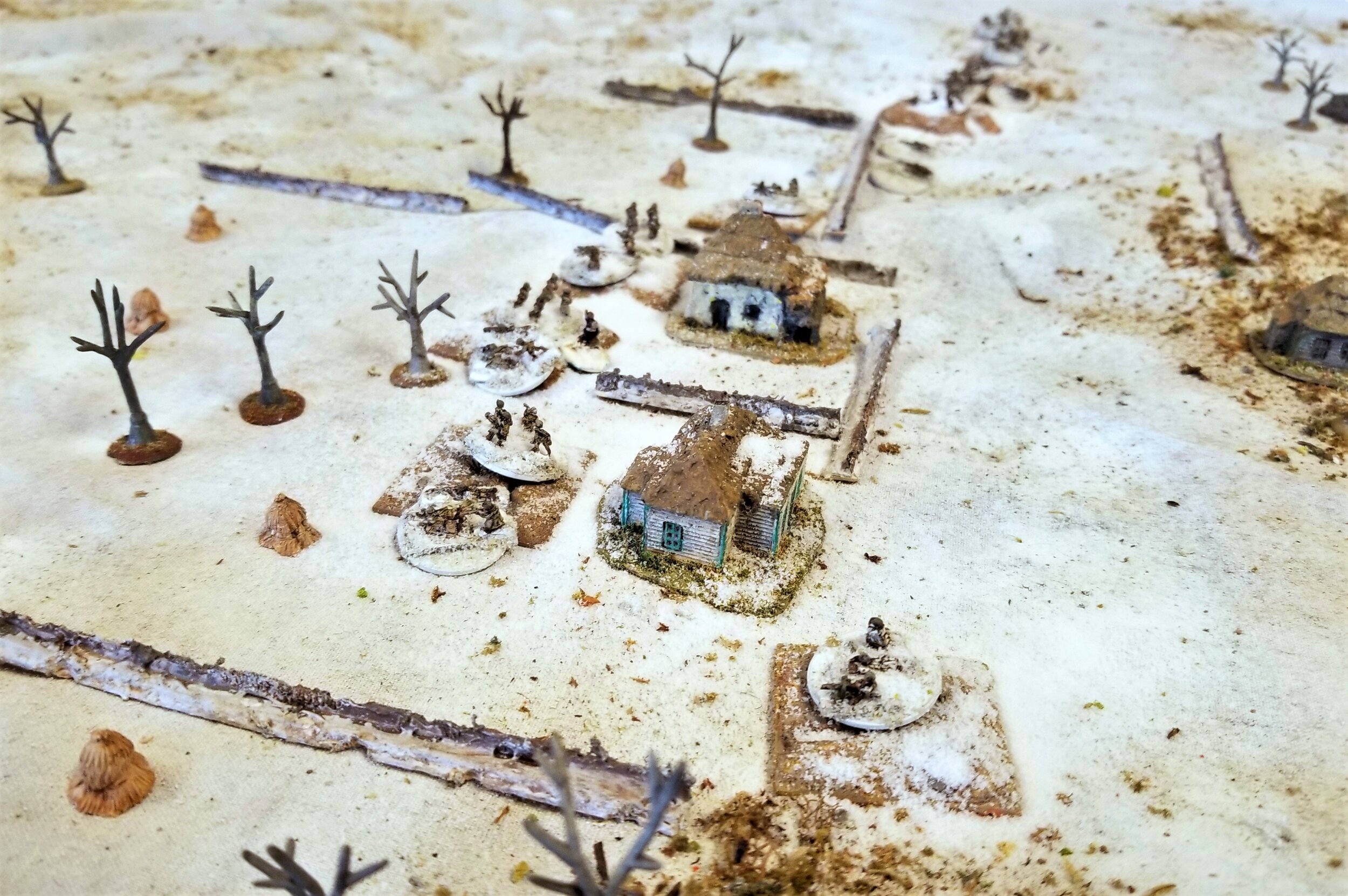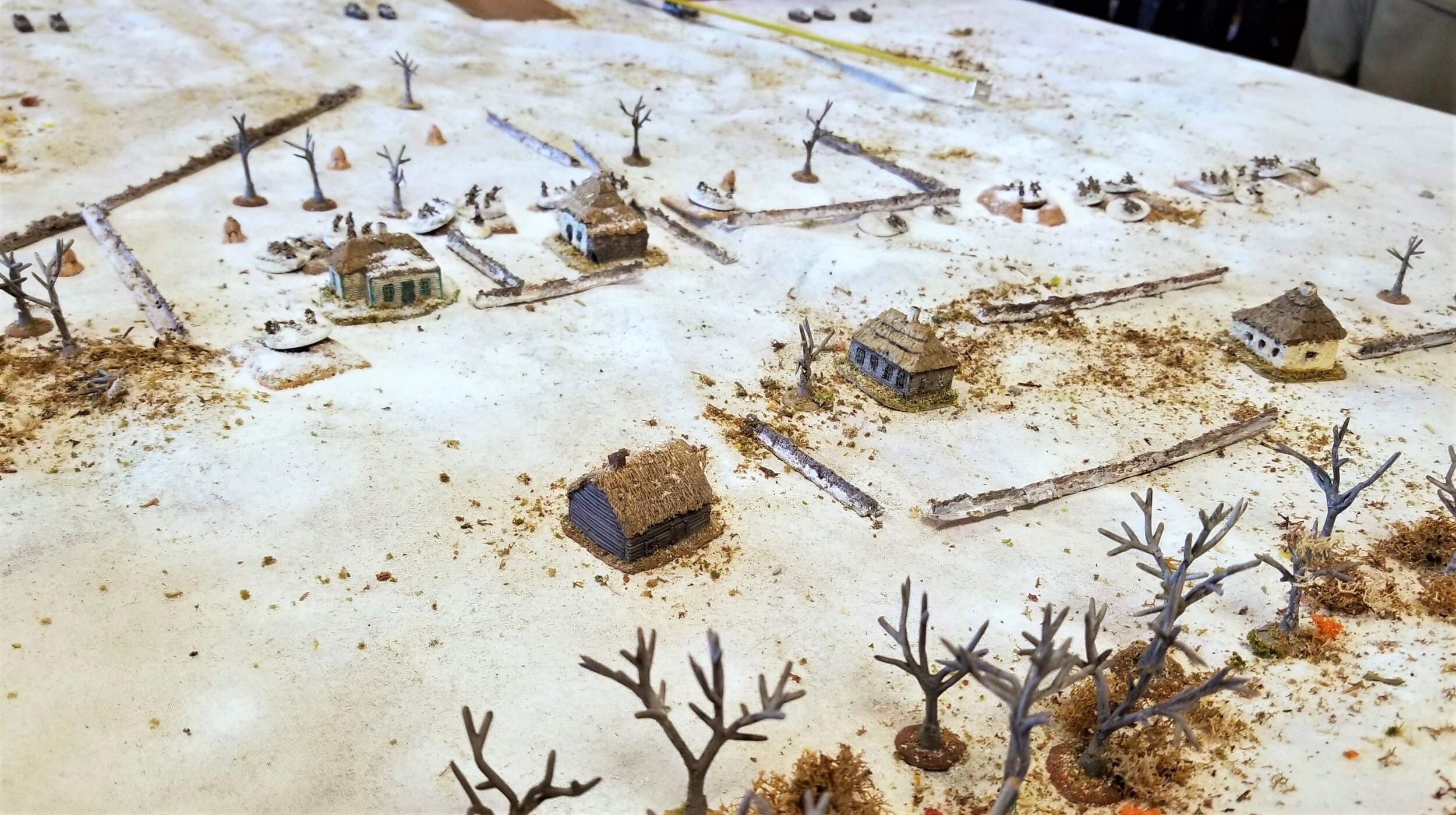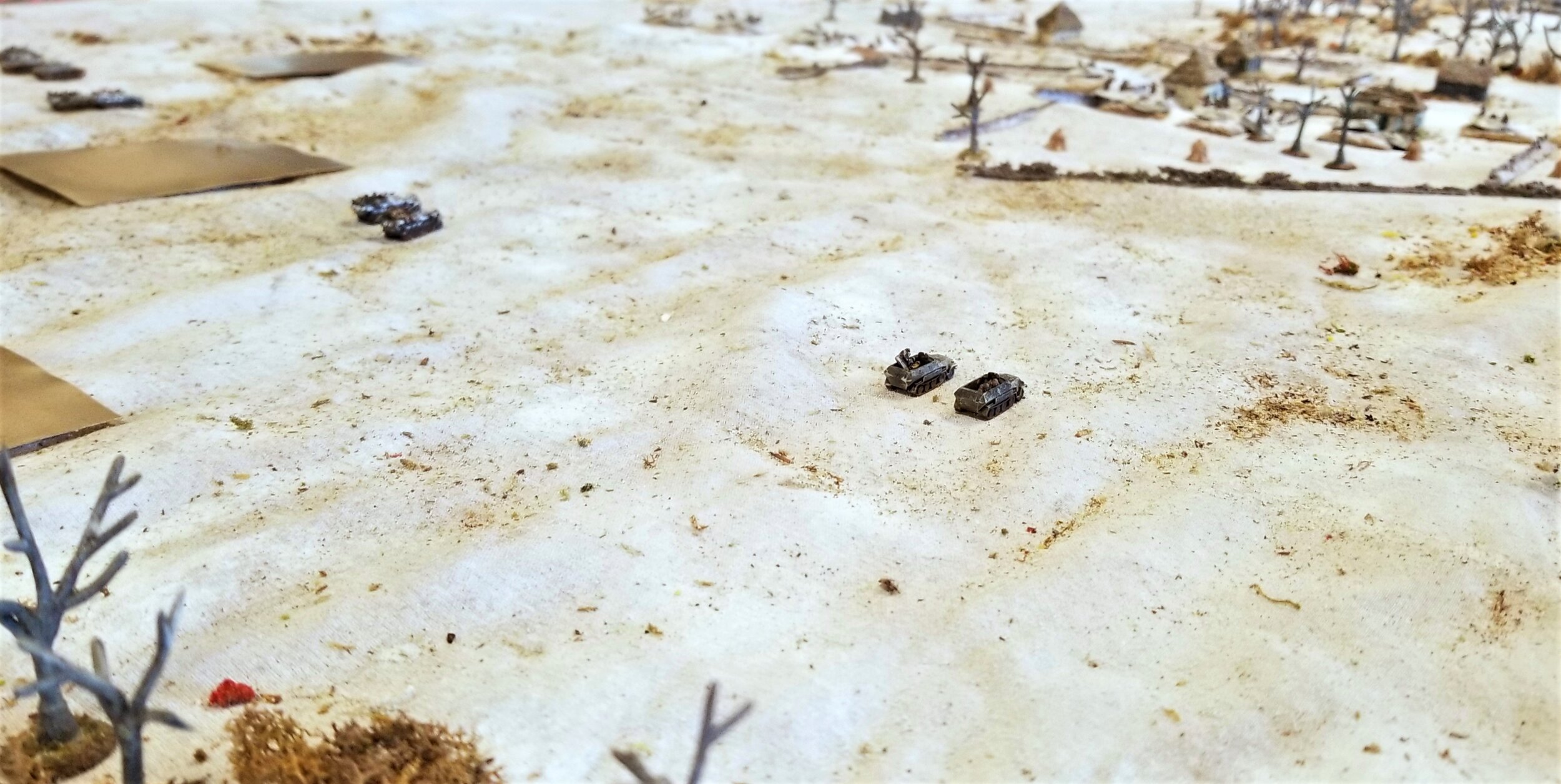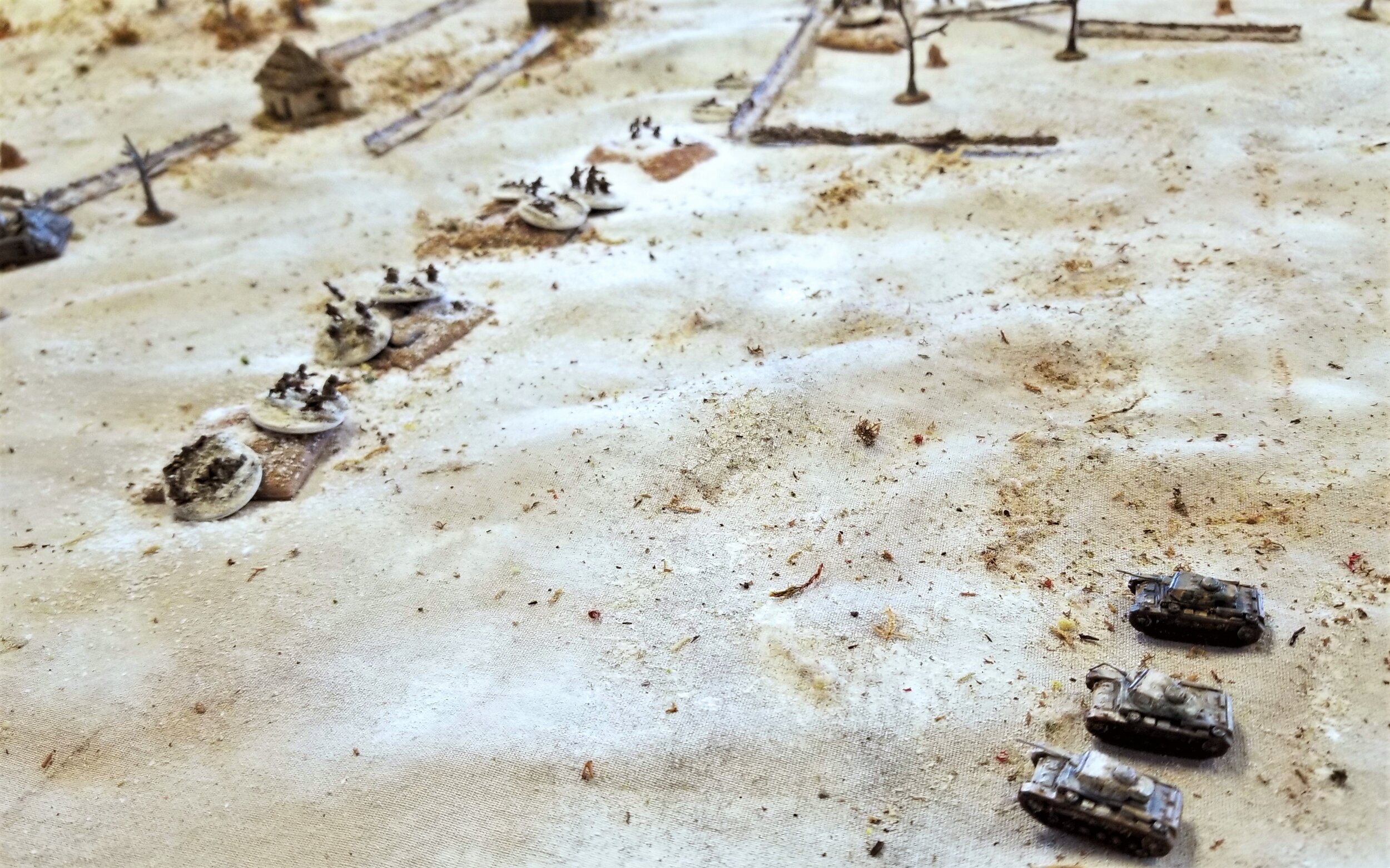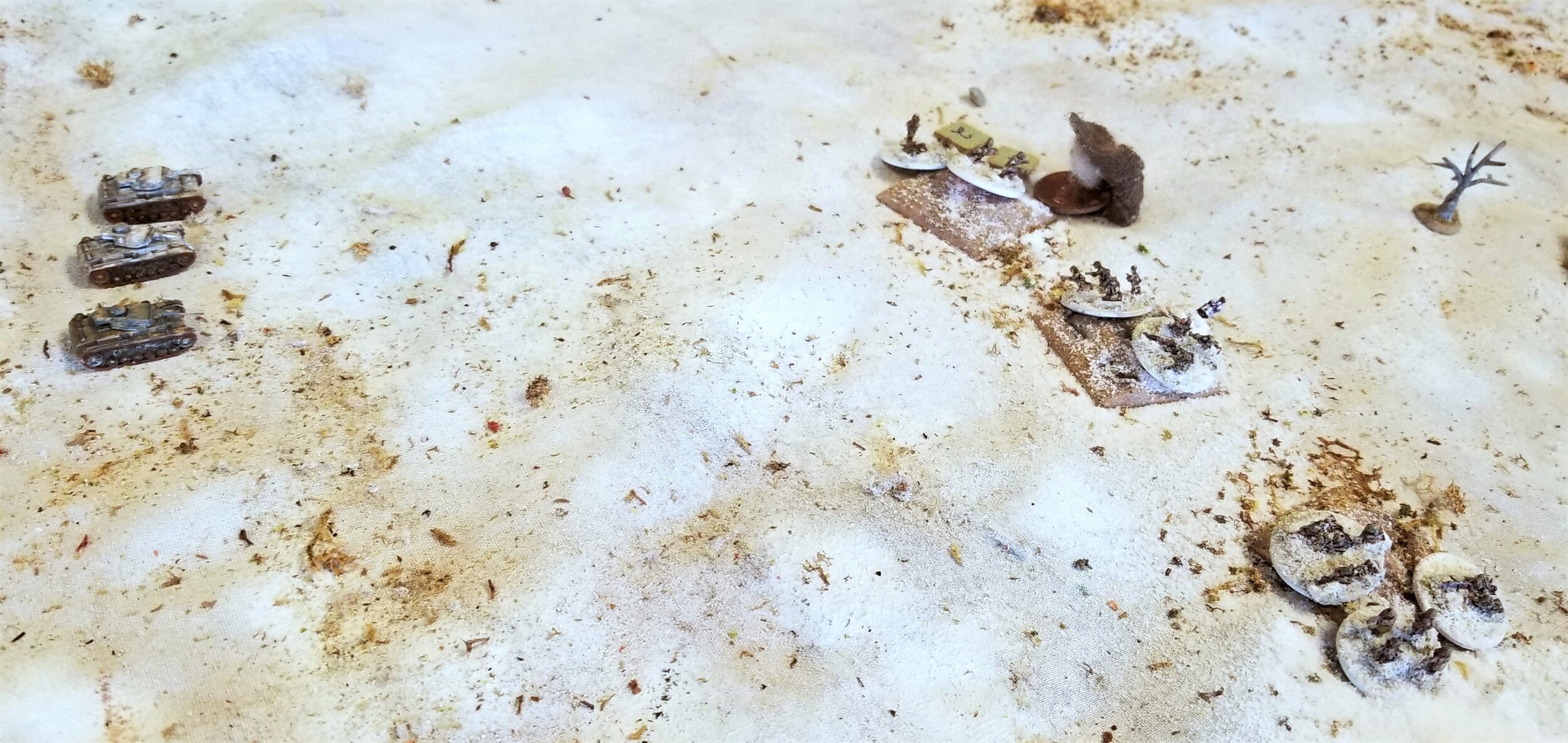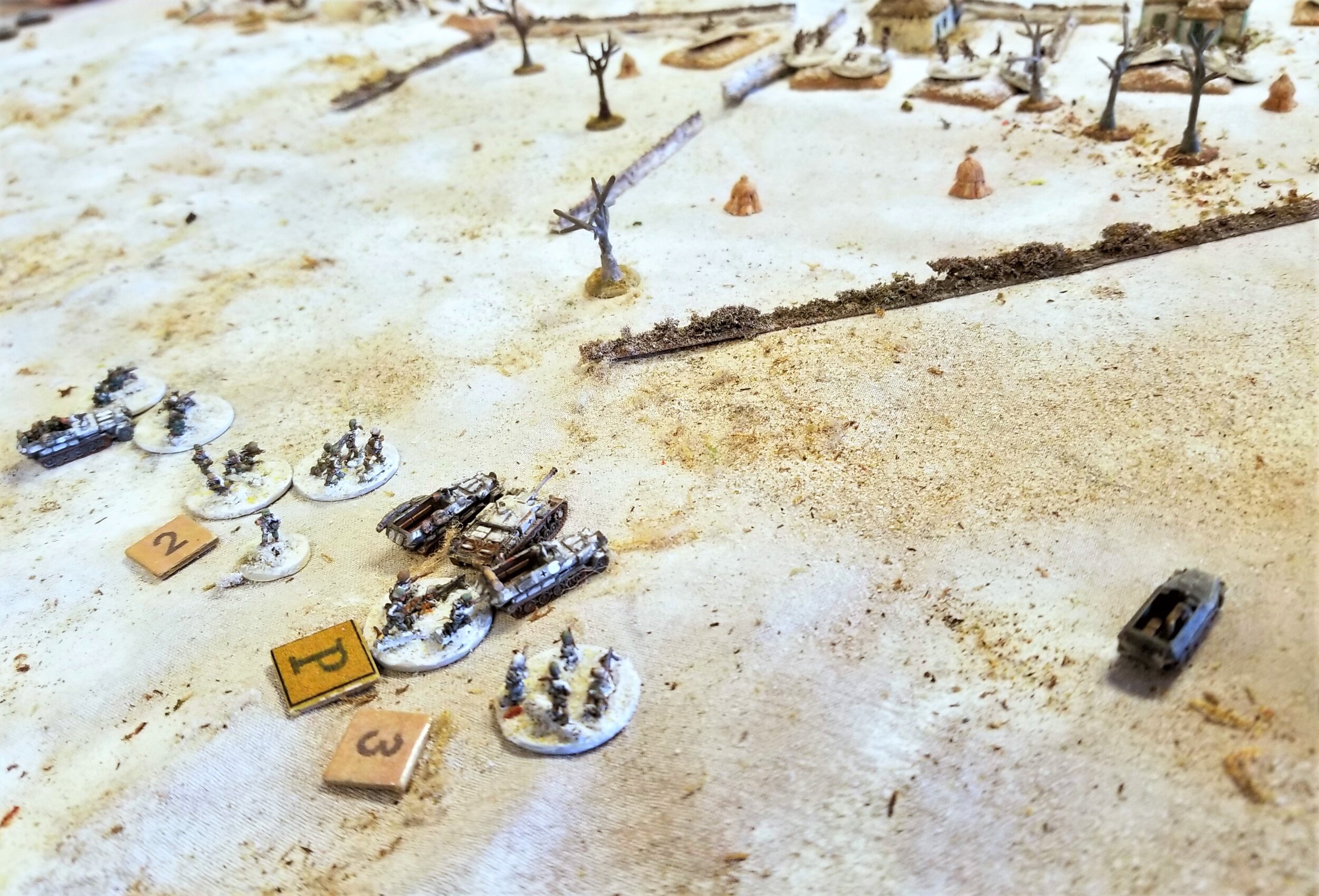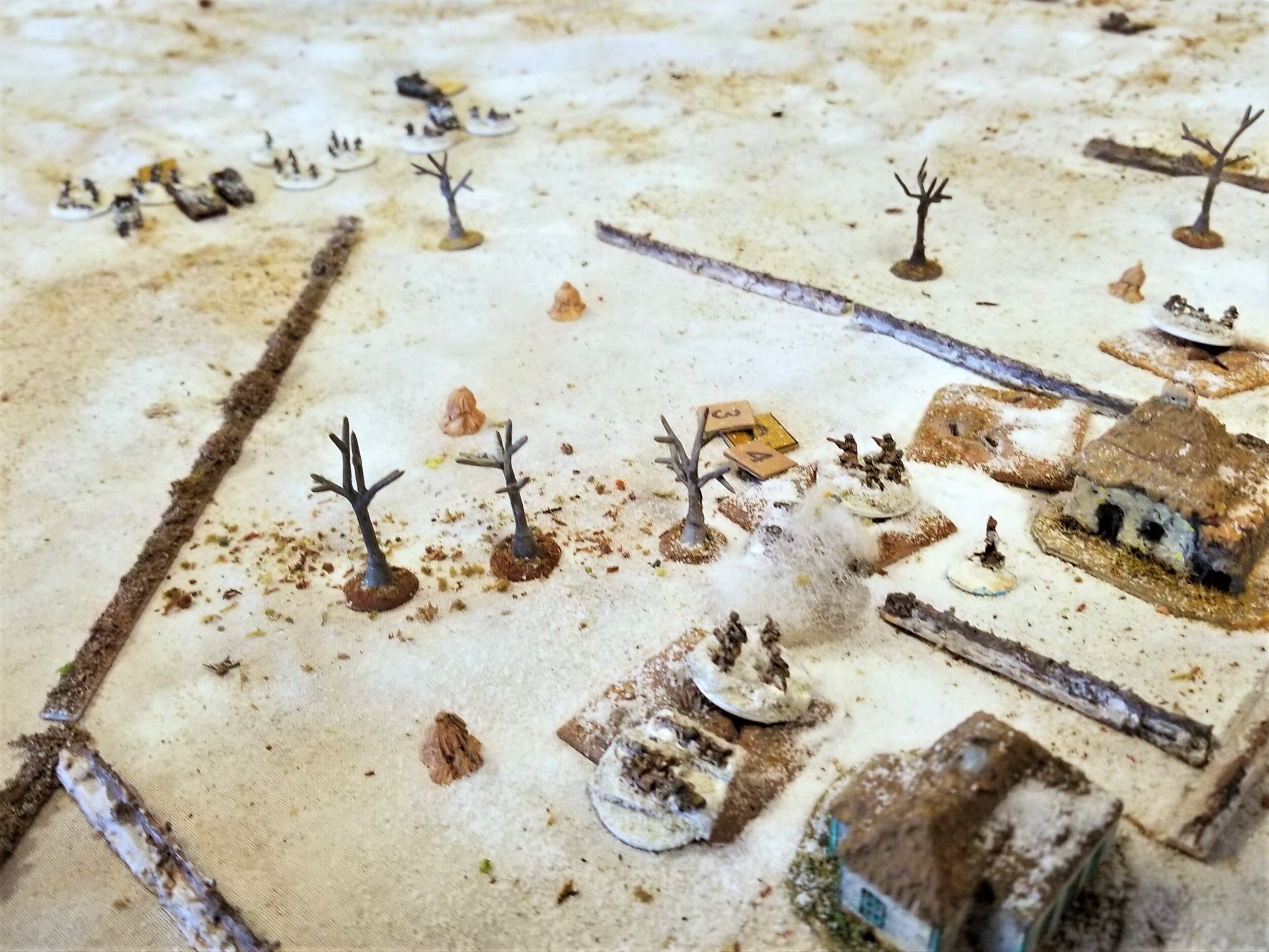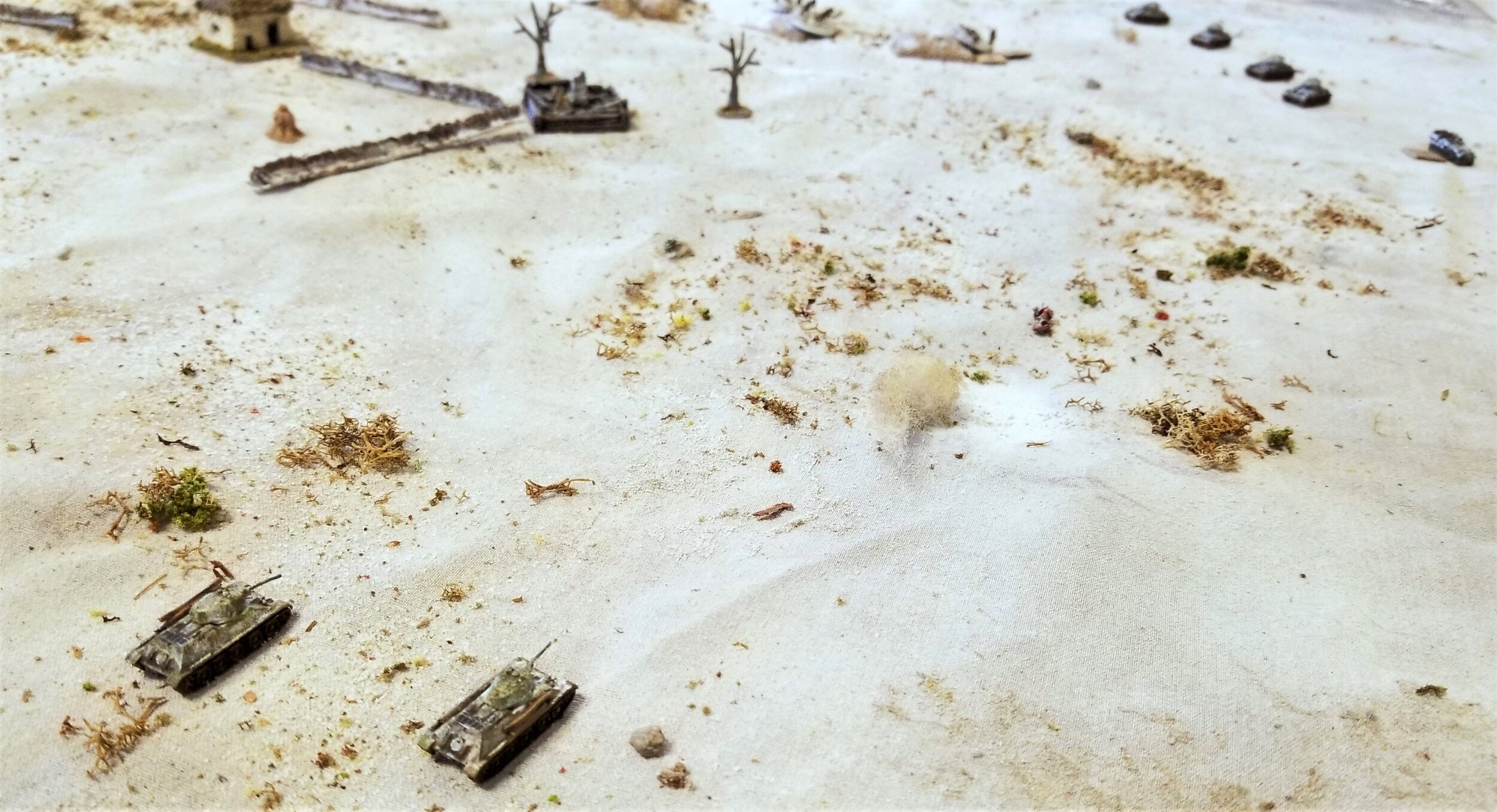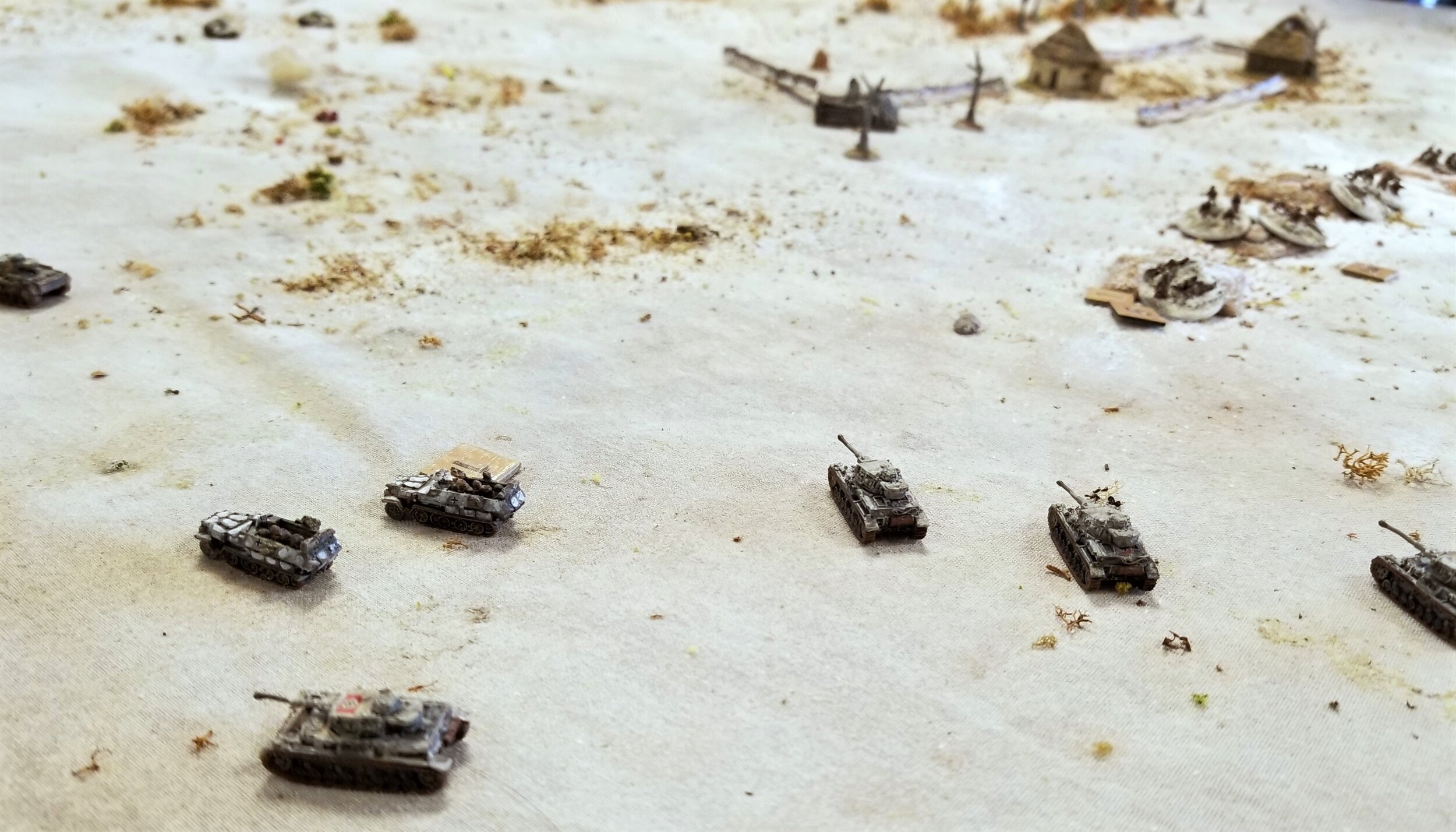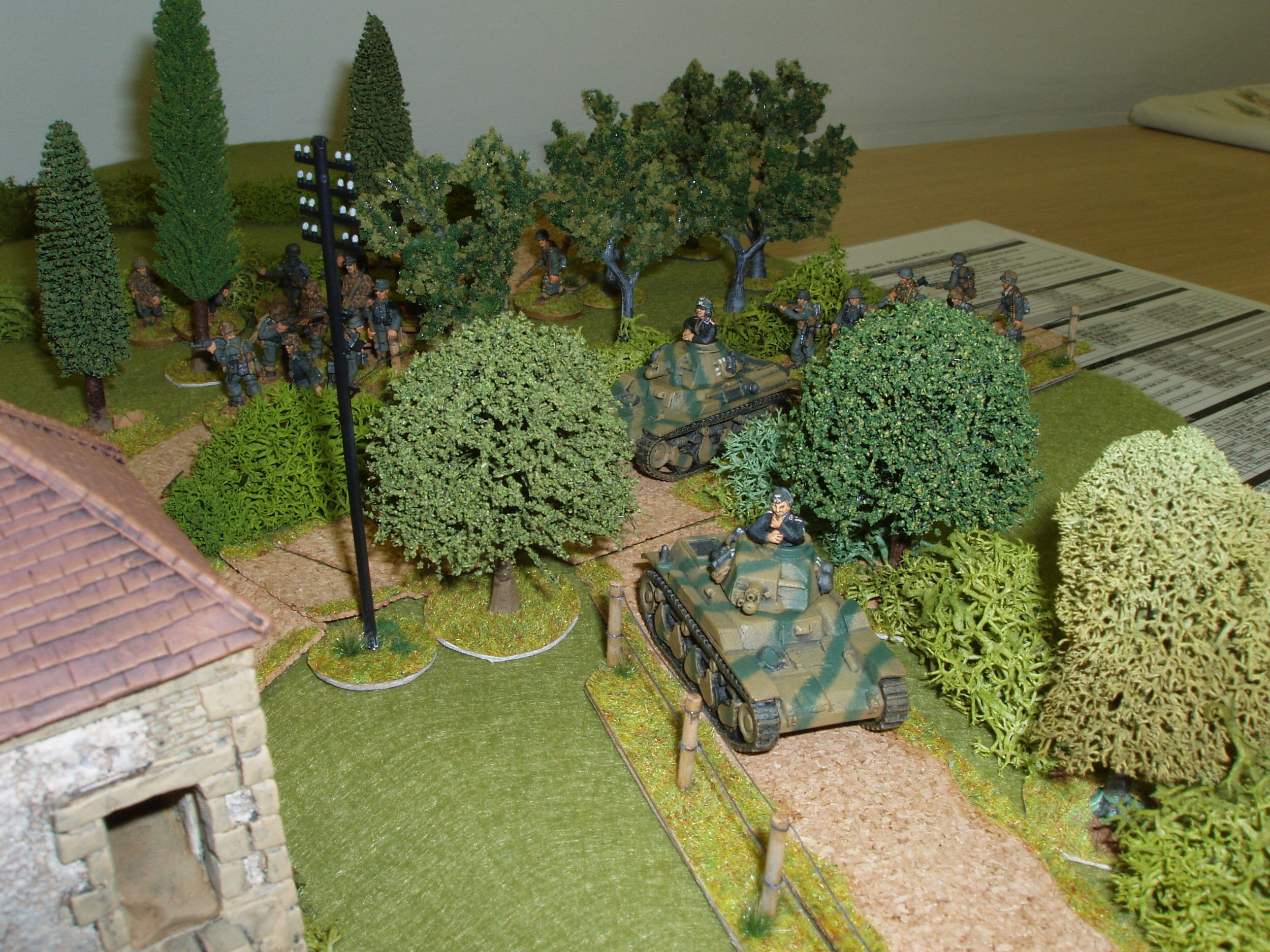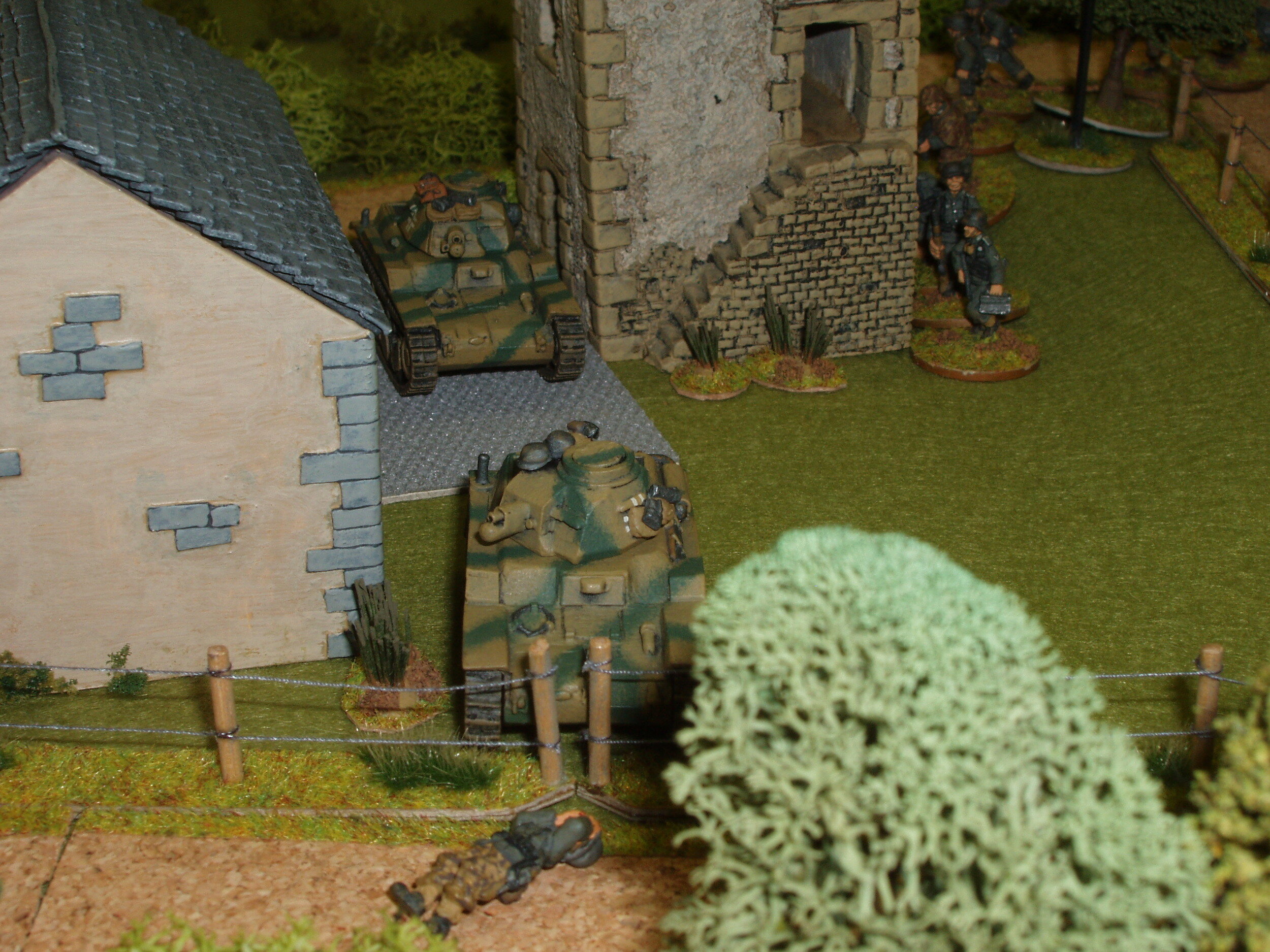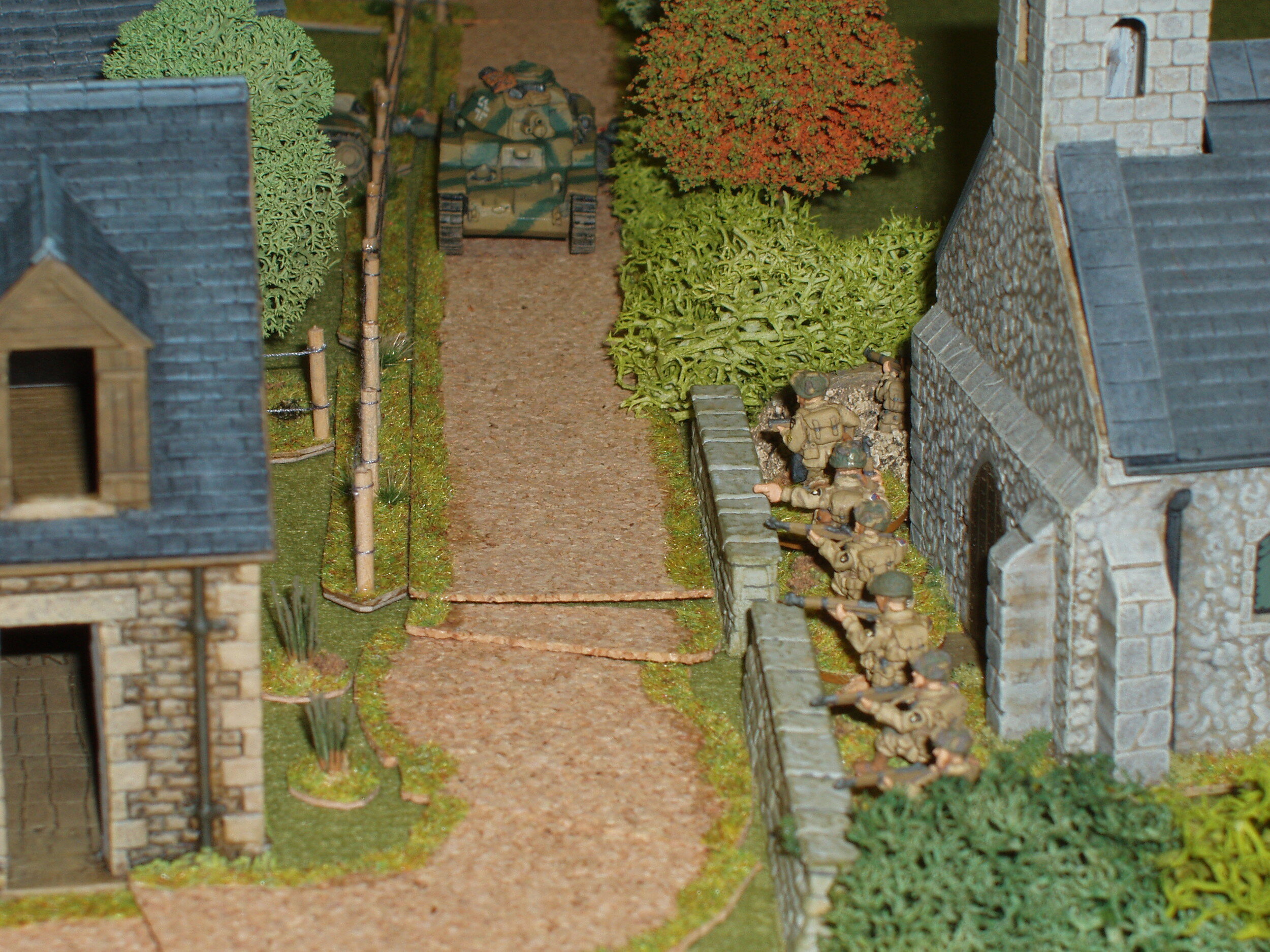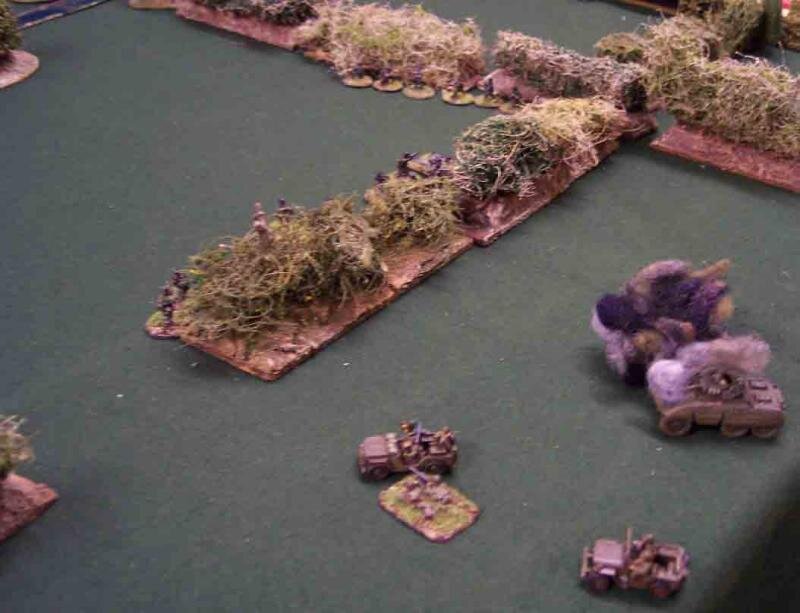So D-DAY dawned and the brave British troops began their liberation of Europe. 15mm scale game using the dice activation version of IABSM. Two company assault with DD tanks and Funnies on Queen Beach, clear two exits and neutralise COD WM.
Wont do too much of an AAR, but it was brilliant fun with my first ever assault ( I am always umpiring for my mates to try this out). I lost two LCA on the run in, three of my four DD tanks sank, One LCA and a DD tank collided ( I have drift rules) an LCT actually drifted into the survivors of a sunk LCA!!!
On the plus side the Funnies all landed and played a full part in the game: the Petards destroyed bunkers, bulldozer cleared mines and obstacles ( but lost a track!) flail cleared a path before being hit, the fascine petard AVRE took out a bunker as well.
Phil did far better than me by getting most of his infantry off the beach, my chaps were in a bad way and I hate to think how they would have fared taking secondary phase objectives!
Iain arrived to command the C company and promptly crashed two LCA together, drowning one whole platoon! Later on he threw the remains of the company on a direct assault on COD while I took part of A company on a flank attack. Casualties were high in C Company.....
Warren did great service to the Fatherland and for a time had us on the ropes
Overall British losses were very high. We never played a game where so many swamping/collisions occurred. Yet we still managed to get ashore and do what we needed to do.
IABSM continues to do the business, and with the dice activation bolted on produces a splendid game.
Des Darkin
And here are some more pictures, this time from Iain Fuller:

































